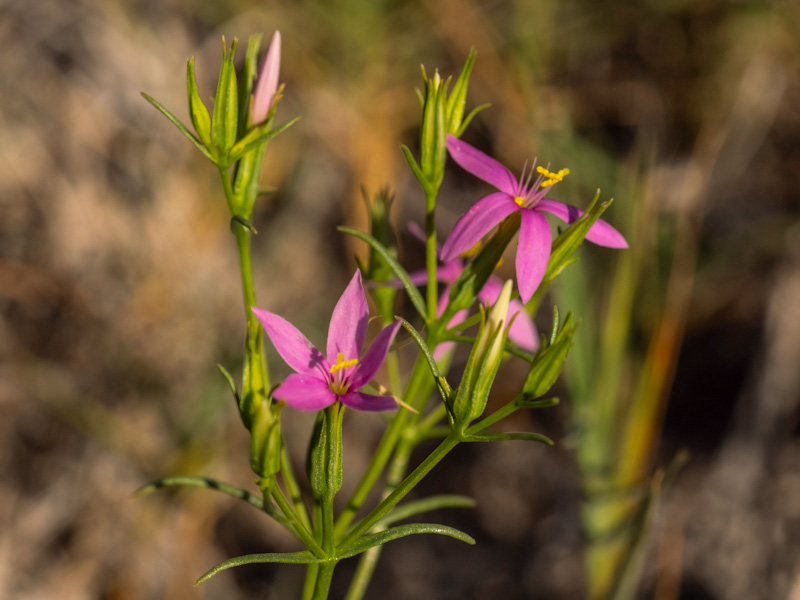
Ash Meadows is one of the few locations in the desert that has flowers blooming throughout the year and not just in the spring. Although there are not carpets of flowers, the ones that appear are often unique, limited to Ash Meadows by isolation and the surrounding harsh, dry desert. The spring flowers tend to be beautiful,a great time to visit. The summer, when it is really hot, can also be the time to see unusual flowers that Ash Meadows is known for like the tiny Spring-loving Centaury (Zeltnera namophila). Many, if not most, of the flowers at Ash Meadows require a close look since they are small but ultimately more than worth the effort.
Foxtail Thelypodium
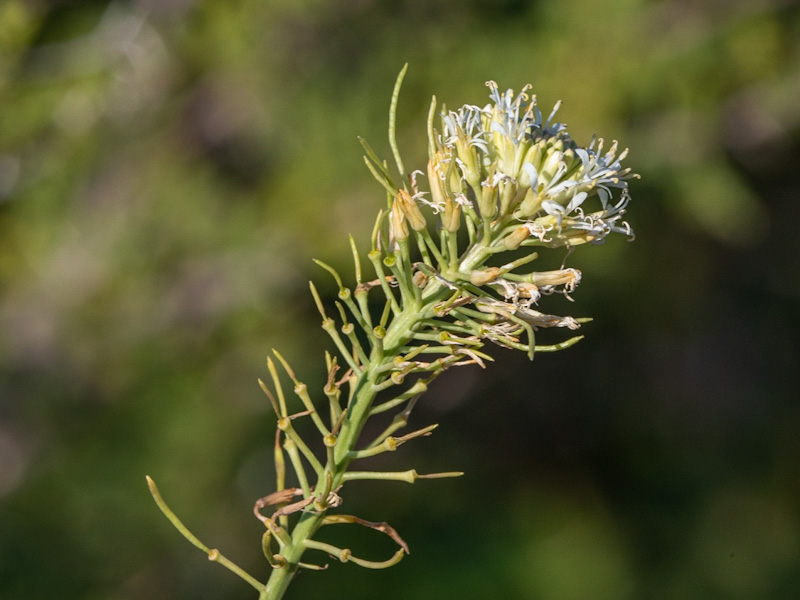
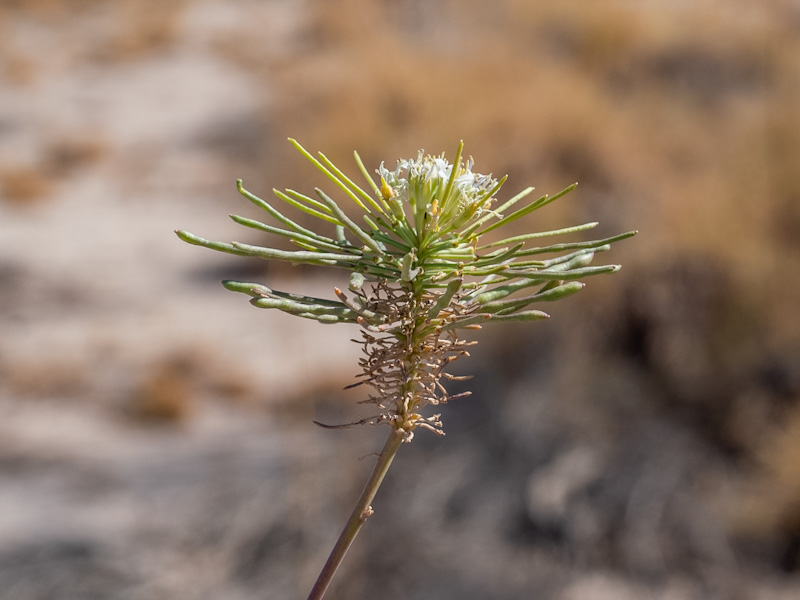
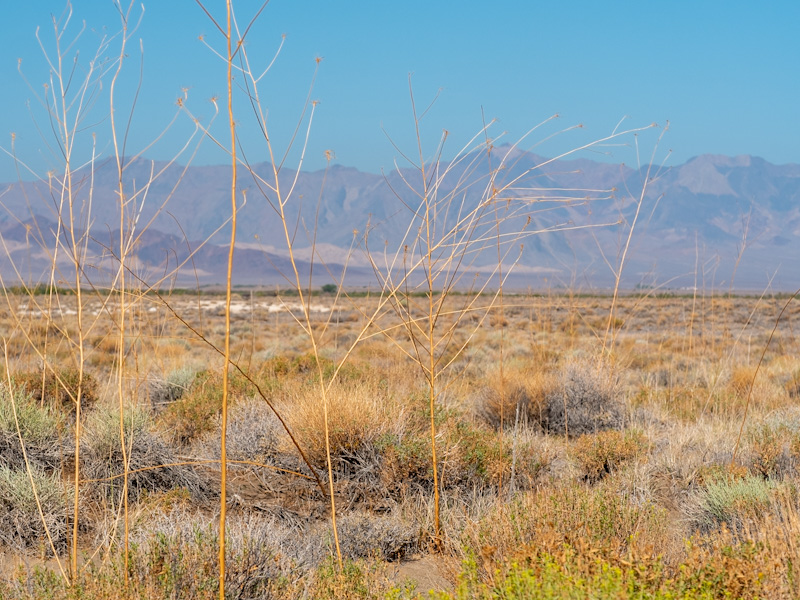
Thelypodium integrifolium is a species of flowering plant in the mustard family known by the common names telescoping mustard, entireleaved thelypody and foxtail thelypodium. It is native to much of the western United States, including the Great Basin and surrounding plateaus and deserts. Thelypodium integrifolium is a biennial herb producing a hairless, waxy stem with a thick, sturdy base, unbranched or branching toward the top and sometimes becoming quite tall, approaching three meters in maximum height. The thick, waxy leaves are not compound or lobed, having smooth edges. The largest basal leaves may exceed 30 centimeters in length. Leaves higher on the plant are shorter and are smooth-edged or toothed. The inflorescence is a dense, cylindrical, spikelike raceme of white or purplish flowers. The fruit is a silique which may be 8 centimeters long.
Thurber’s Sandpaper Plant
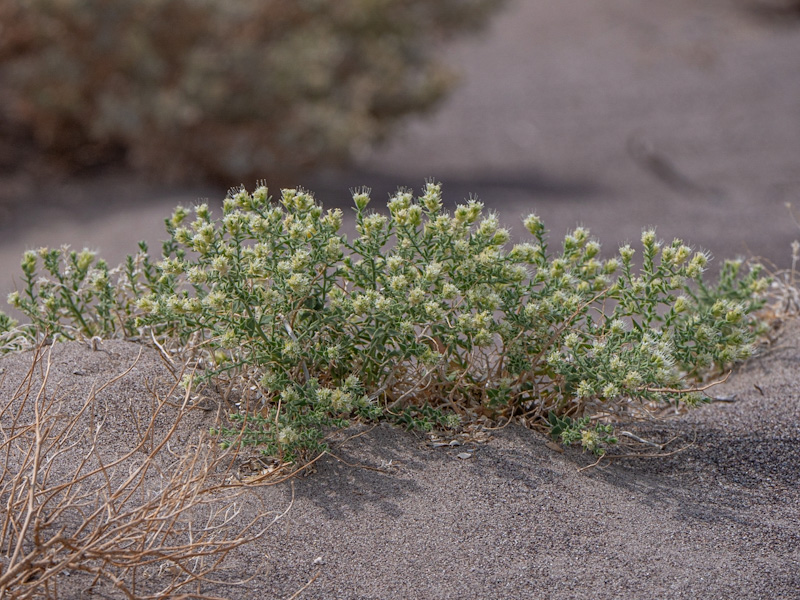
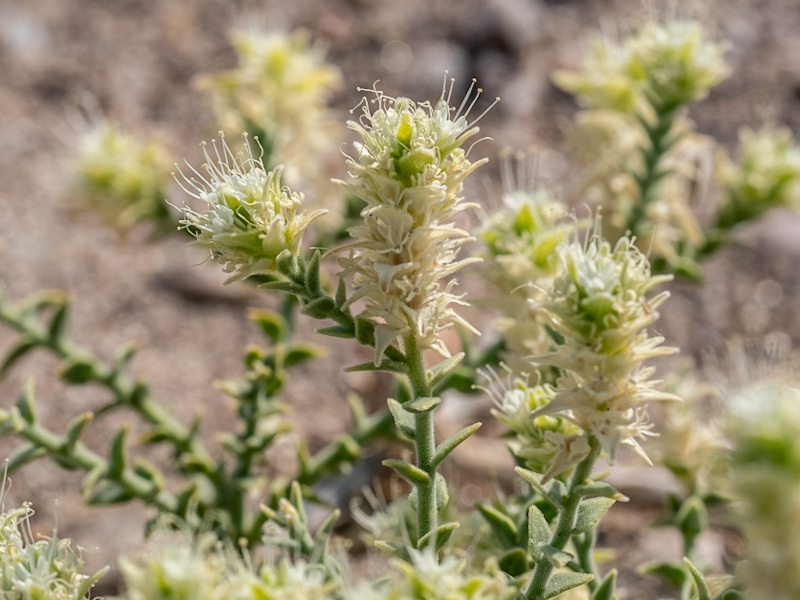
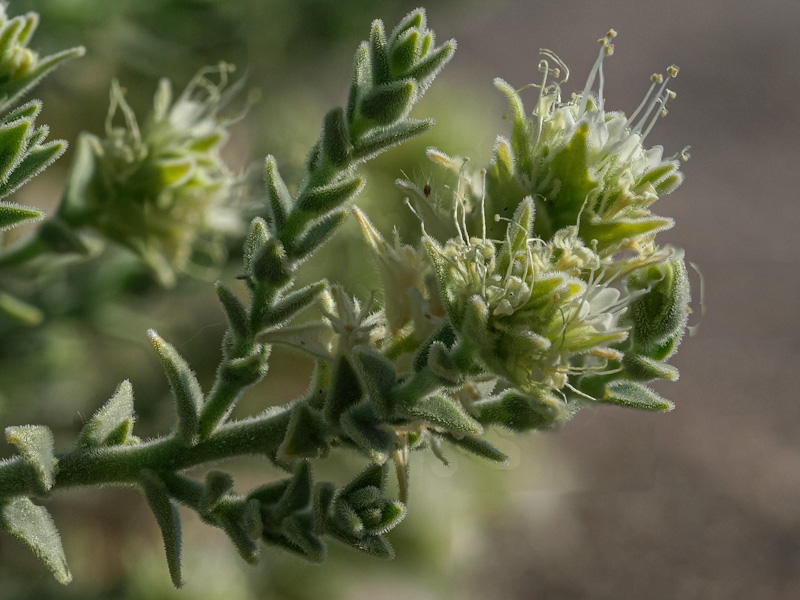
Petalonyx thurberi is native to the deserts of the southwestern United States and northwestern Mexico, where it grows in sandy and scrubby habitat. It is a rounded or spreading, clumpy subshrub made up of many rough-haired stems approaching one meter in maximum height. The stems are lined with clasping leaves varying in shape from lance-shaped to triangular to oval and sometimes toothed. The inflorescence at the end of the stem is a small, crowded raceme of several flowers. The white flower appears tubular, its petals fused near the spreading tips but open lower, the stamens emerging from outside the corolla. There are two subspecies, with the rarer, ssp. gilmanii (Death Valley sandpaper plant), limited to the deserts in and around Death Valley.
Yerba Mansa
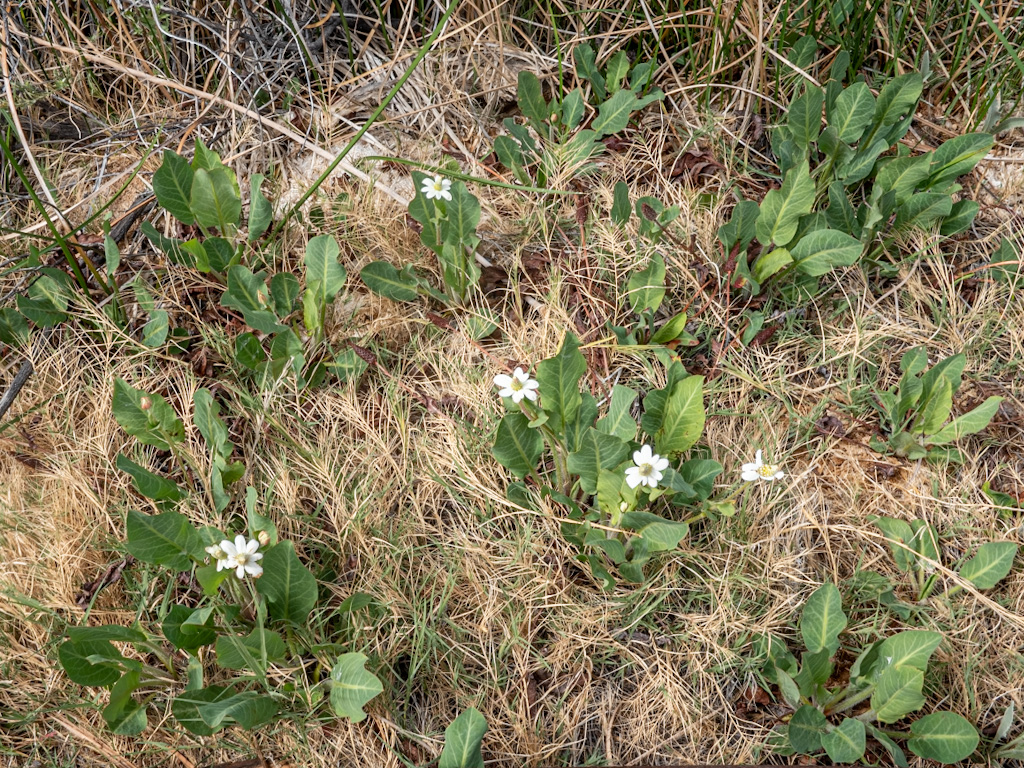
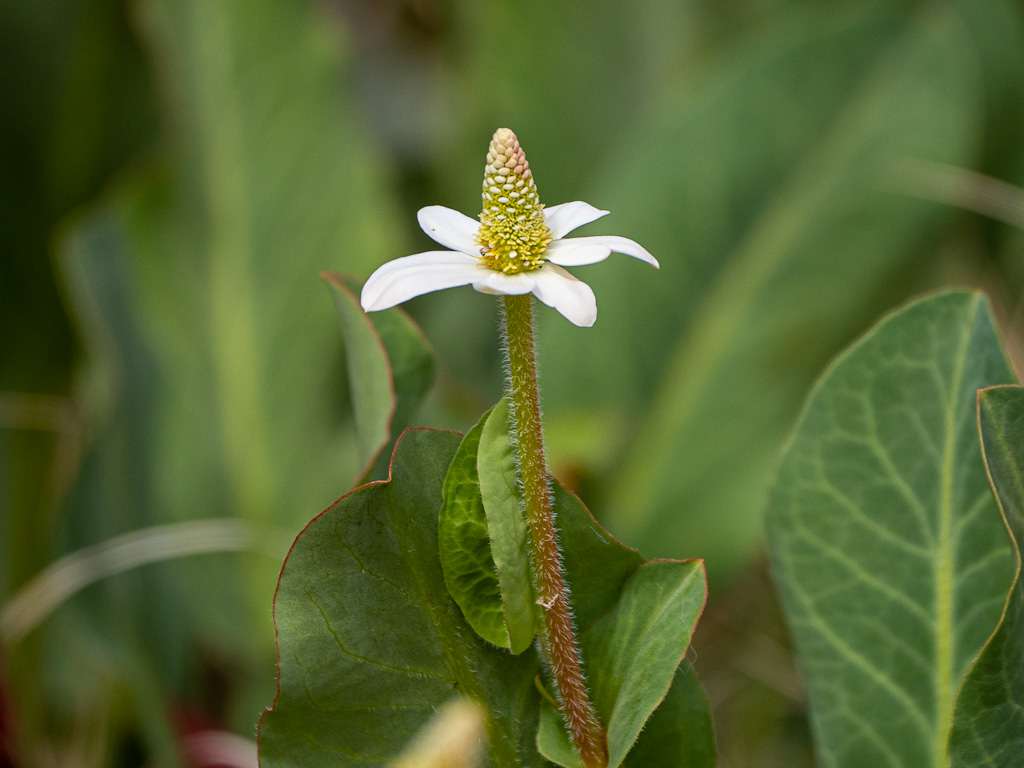
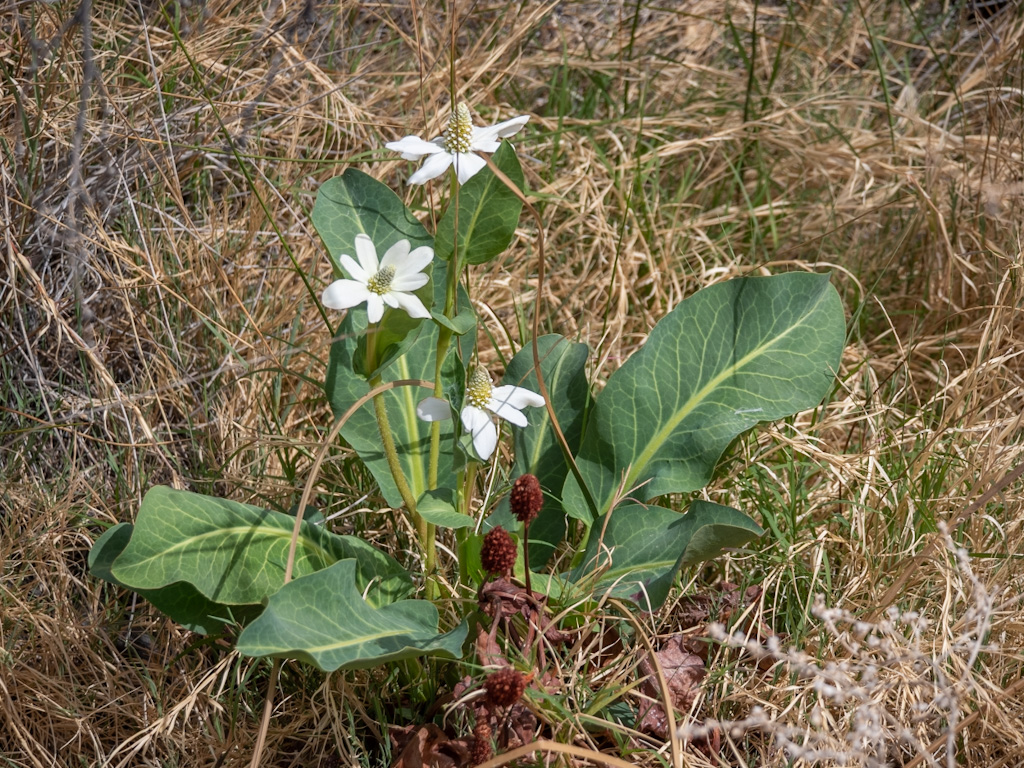
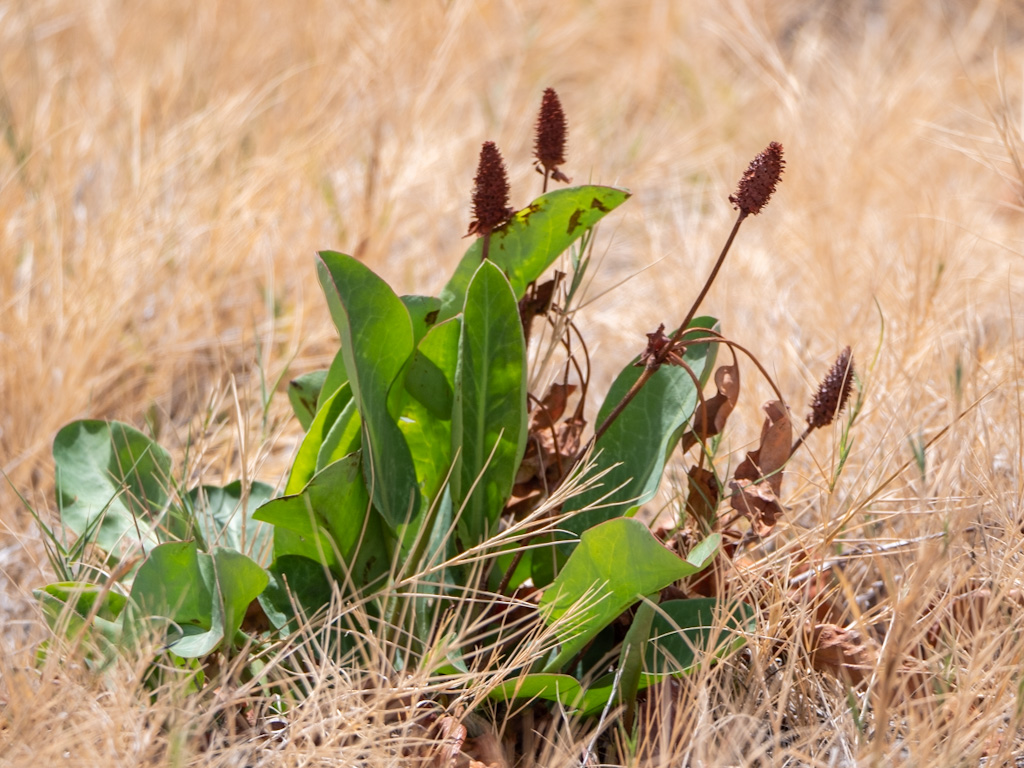
The monotypic genus Anemopsis has only one species, Anemopsis californica, with the common names yerba mansa or lizard tail. It is a perennial herb in the lizard tail family (Saururaceae) and prefers very wet soil or shallow water. Yerba mansa is showy in spring when in bloom. The iconic white “flowers” (actually reduced inflorescences, or pseudanthia) are borne in early spring, and are surrounded by 4–9 large white bracts. Similar to the family Asteraceae, what appears to be a single bloom is in reality a dense cluster of individually small flowers borne in an inflorescence. In this species the inflorescence is conical and has five to ten large white bracts beneath it, so that along with the tiny white florets, the whole structure is quite striking when it blooms in spring. The conical structure develops into a single, tough fruit that can be carried downstream to spread the tiny, pepper-like seeds.
Blooms: May-June
Sacred Datura
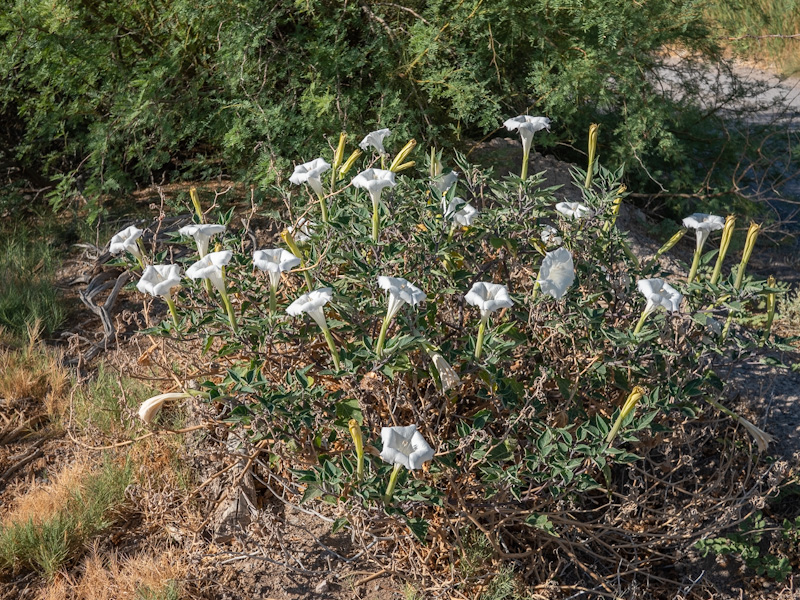
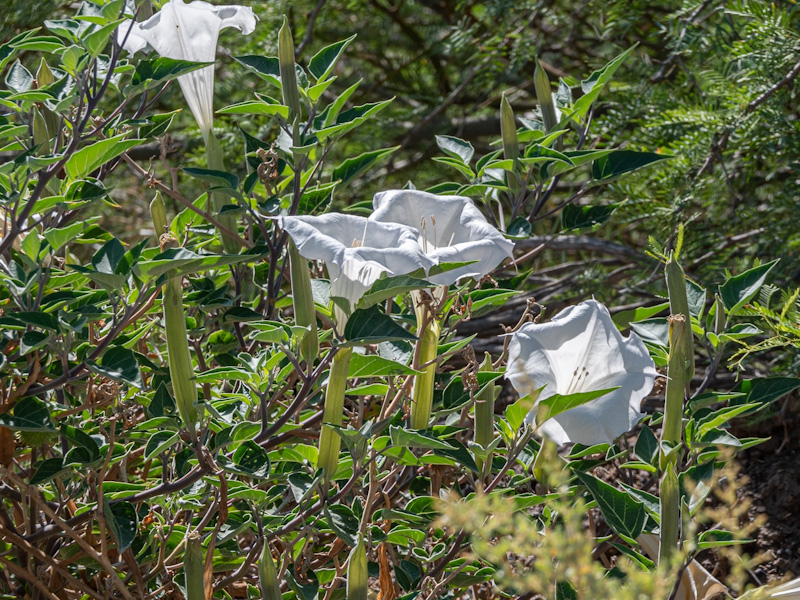
Datura wrightii, commonly known as sacred datura, is a poisonous perennial plant species and ornamental flower of the family Solanaceae native to the Southwestern United States and northwestern Mexico. It is sometimes used as a hallucinogen due to its psychoactive alkaloids. It is a vigorous herbaceous perennial[5] that grows 30 cm to 1.5 m tall and wide. The leaves are broad and rounded at the base, tapering to a point, often with wavy margins. The flowers are the most striking feature, being sweetly fragrant white trumpets up to 20 cm (7.9 in) long, sometimes tinted purple, especially at the margin. Five narrow points are spaced symmetrically around the rim. The plants often can be seen as a ground vine in habit, growing close to the ground and spreading in a very exposed environment with full direct sunlight (cleared roadside). D. Wrightii, blooms from April through October. In clear weather, flowers open in the morning and evening and close during the heat of the day (depending on water availability); in cloudy weather, they may open earlier and last longer.
Desert Pepperweed
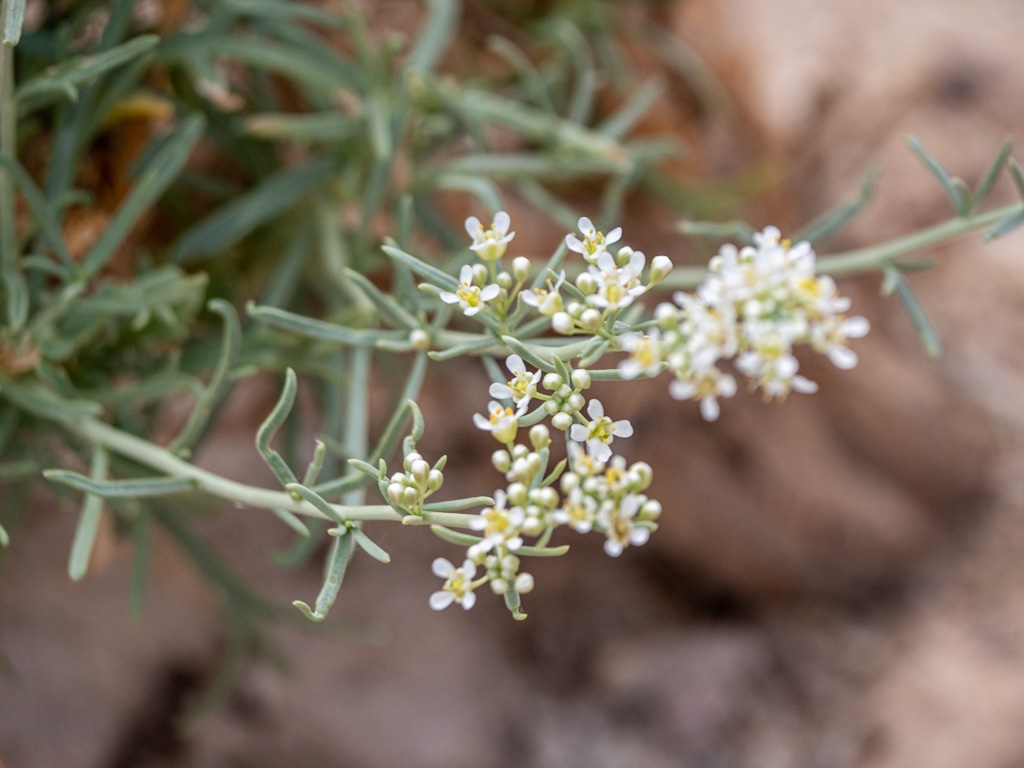
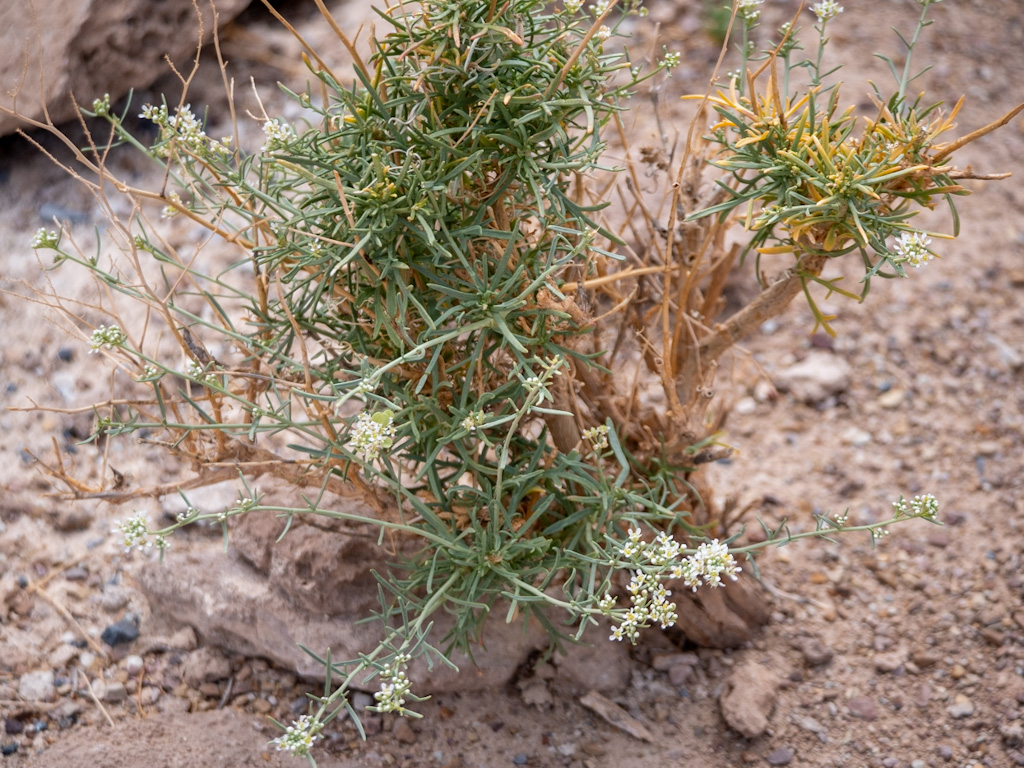
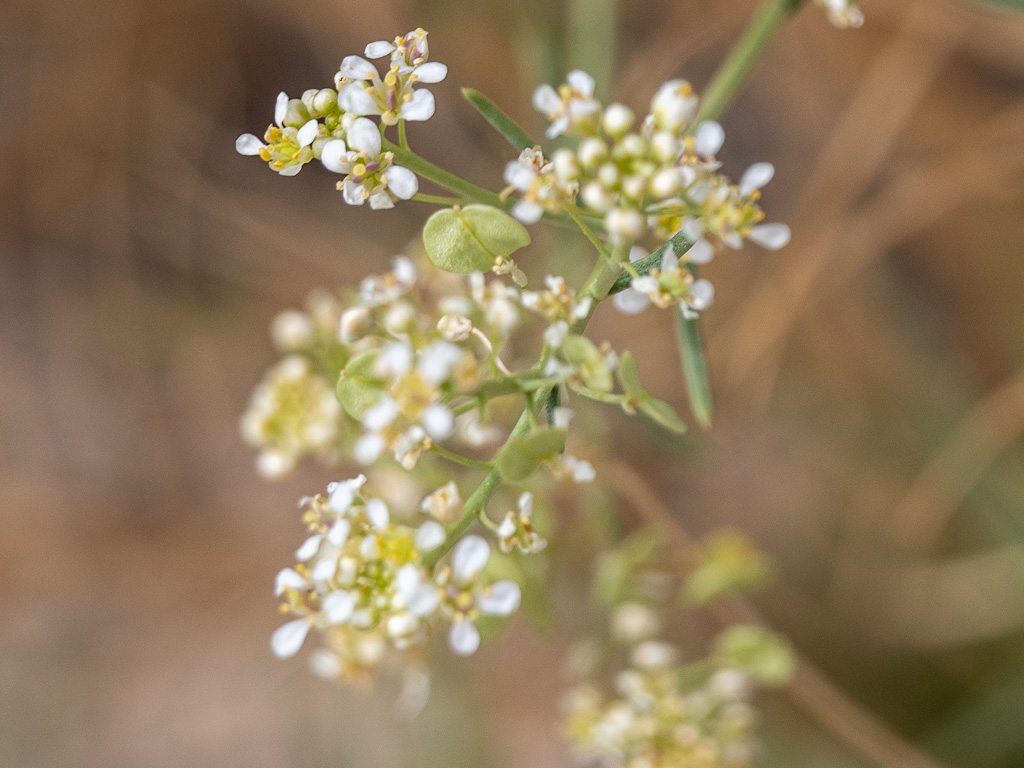
The desert pepperweed, is a species of flowering plant in the mustard family which is native to the southwestern United States, where it grows on sandy desert flats and the rocky slopes of nearby hills and mountains. It takes its scientific name from John C. Frémont. Lepidium fremontii is a robust perennial herb producing a branching, tangled gray stem to about a meter in height. The many sprawling stems are foliated in linear leaves up to about 10 centimeters long which may have several fingerlike lobes. The plant produces thick racemes of many small flowers. Each flower has spoon-shaped white petals just a few millimeters long. The fruit is a mostly flattened oblong to rounded capsule under a centimeter long.
Salt Heliotrope
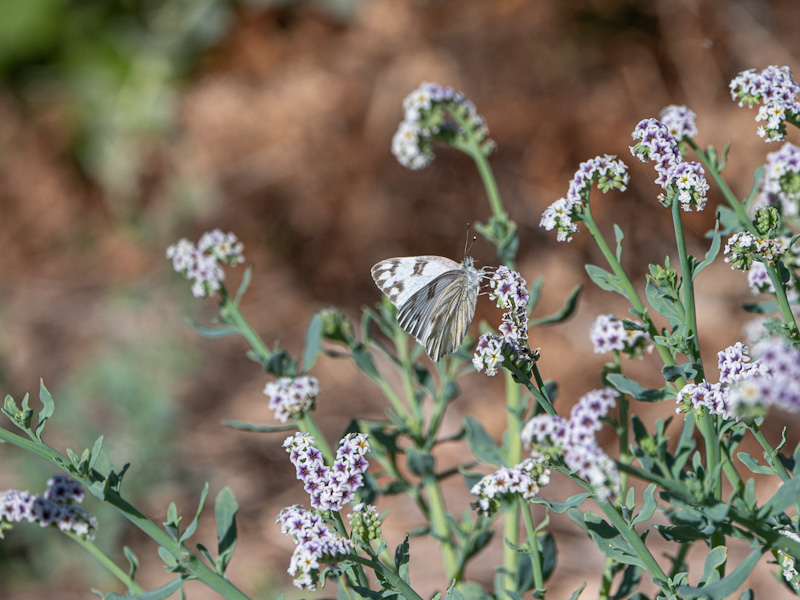
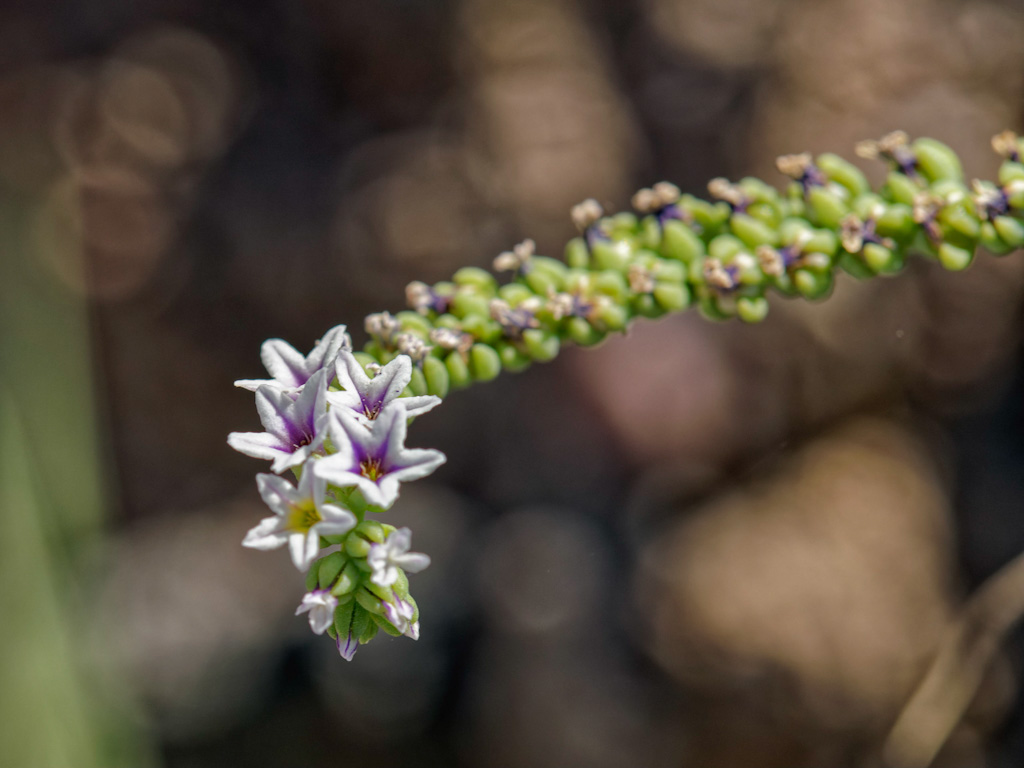
Salt Heliotrope is native to much of the Americas, from Canada to Argentina, including the West Indies and Hawaii. It can be found as an introduced, and sometimes invasive, species in Africa, Asia, Australia, and Europe. It thrives in salty soils, such as beach sand, alkali flats, and salt marshes. This is a perennial herb which is in the form of a prostrate creeper along the ground. The stem and foliage are blue-green, with the leaves thin and oval or spade-shaped. The plentiful inflorescences are curled, coiling double rows of small bell-shaped flowers. Each flower is white with five rounded lobes and a purple or yellow throat. The fruit is a smooth nutlet.
Alkali Heliotrope
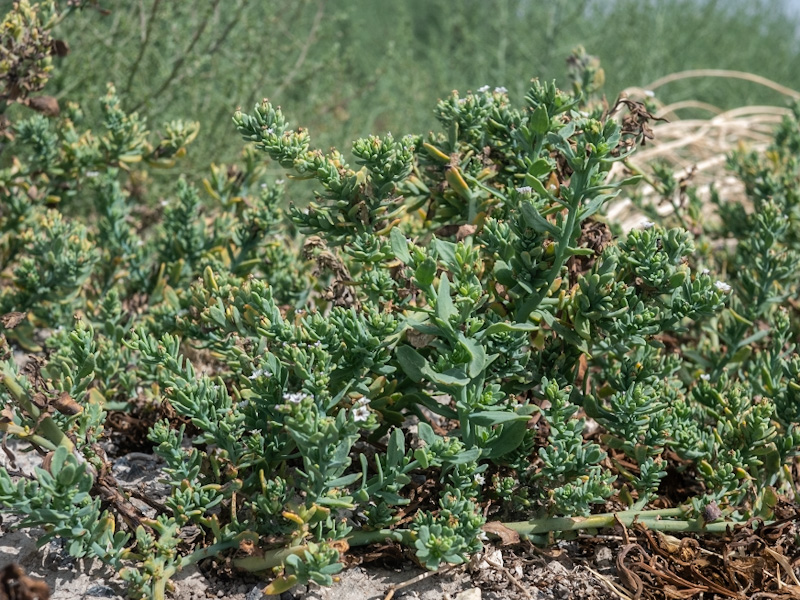
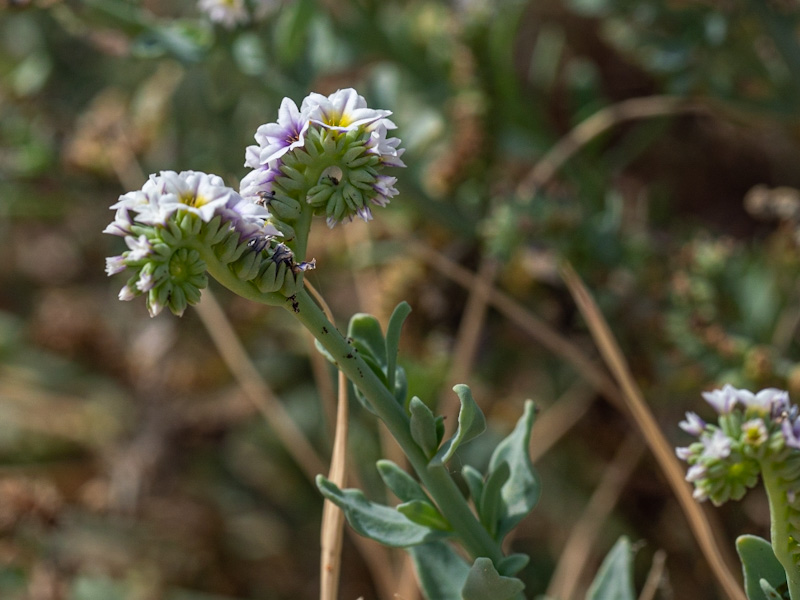
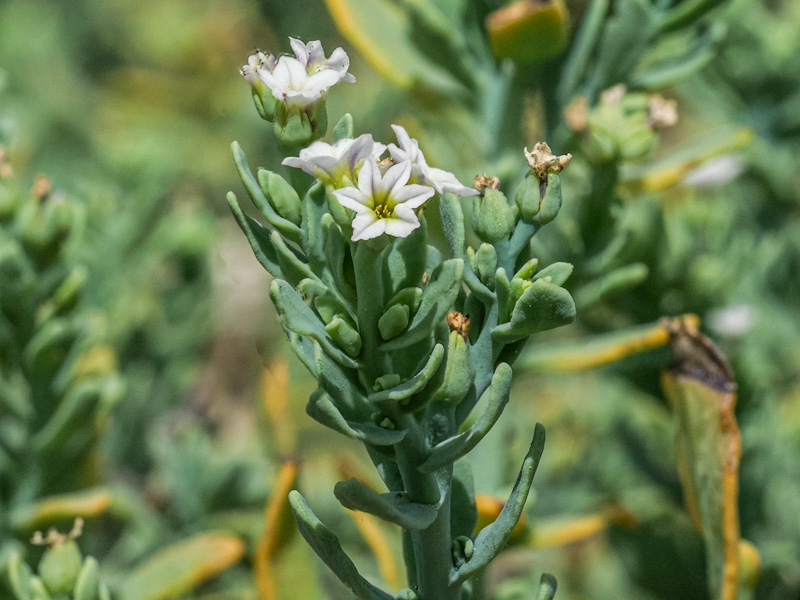
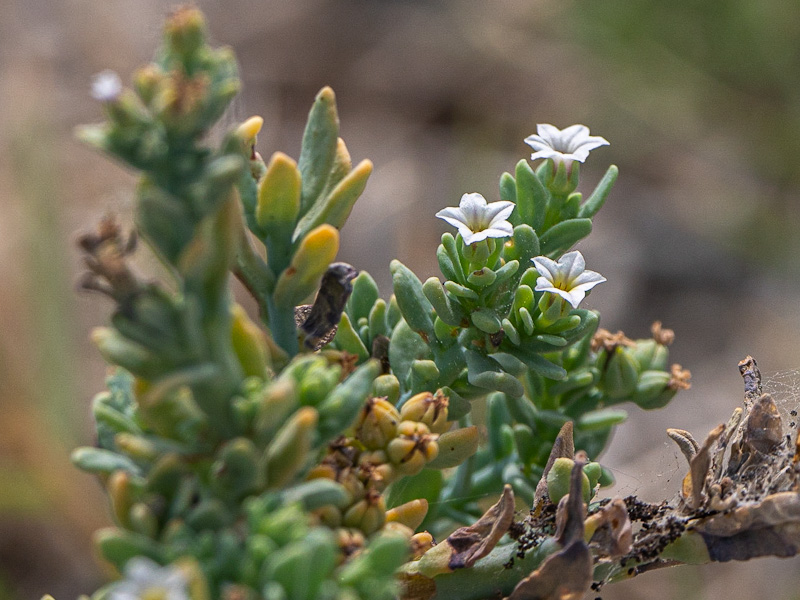
The oculatum variety of Heliotropium curassavicum is much larger with thick fleshy leaves and stems more of a gray green color. The flowers are also much larger but have the same colors and uncoiling spike, a flower-studded fiddleneck. It becomes a somewhat erect shrub 2 feet (0.6 m) in height and can spread several feet along the ground. The plants are hairless, but lightly dusted with a white powder that easily rubs off. The plants colonize exposed alkaline or saline soils and the banks of streams and washes in arid western U. S. and Baja California. The name Quail’s Delight has also been used with this variety. The two versions of this plant are often confused because the observer has not seen both types.
Dogbane
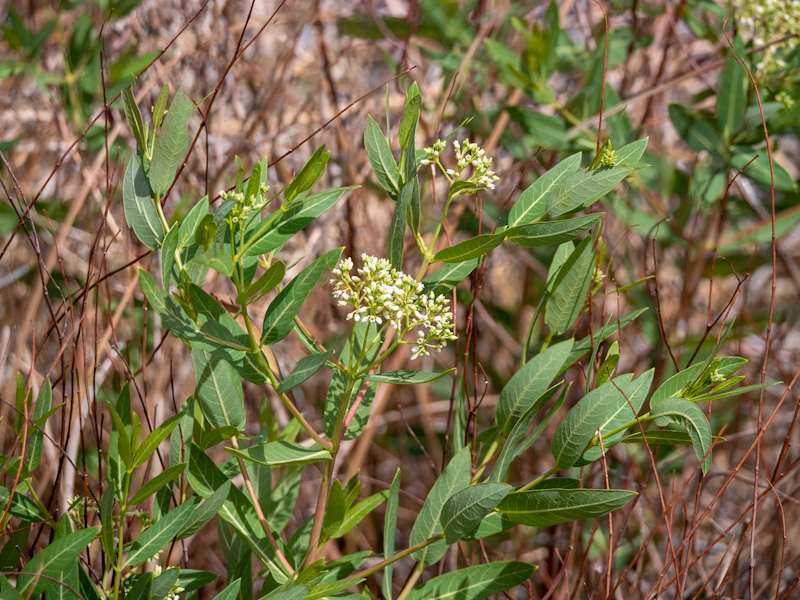
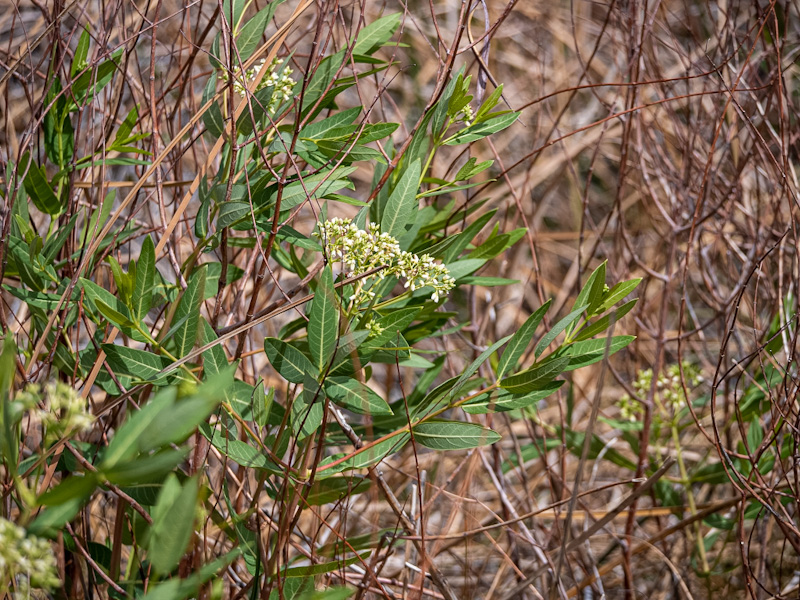
Apocynum cannabinum (dogbane, amy root, hemp dogbane, prairie dogbane, Indian hemp, rheumatism root, or wild cotton) is a perennial herbaceous plant that grows throughout much of North America—in the southern half of Canada and throughout the United States. It is poisonous to humans, dogs, cats, and horses. All parts of the plant are toxic and can cause cardiac arrest if ingested. Apocynum cannabinum grows up to 3 feet (1 m) tall. The stems are reddish and contain a milky latex. The leaves are opposite, simple broad lanceolate, 3–6 inches (7–15 cm) long and 1–2 inches (3–5 cm) broad, entire, and smooth on top with white hairs on the underside. It flowers from July to August, has large sepals, and a five-lobed white corolla. The flowers are hermaphrodite, with both male and female organs.
Cheesebush
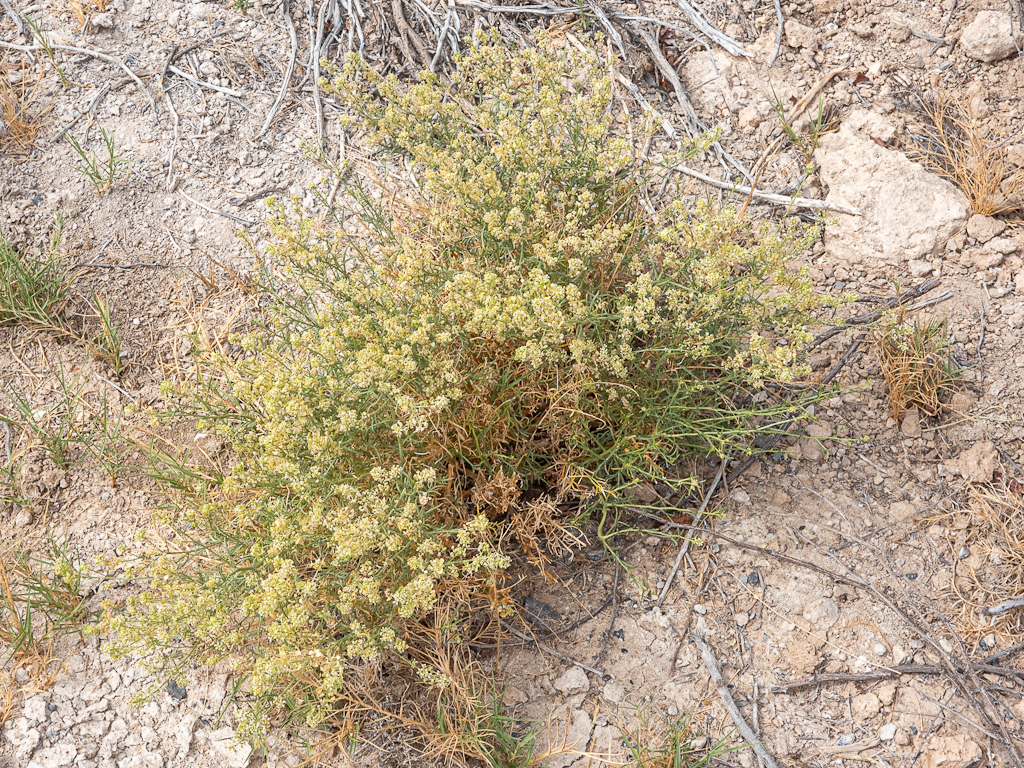
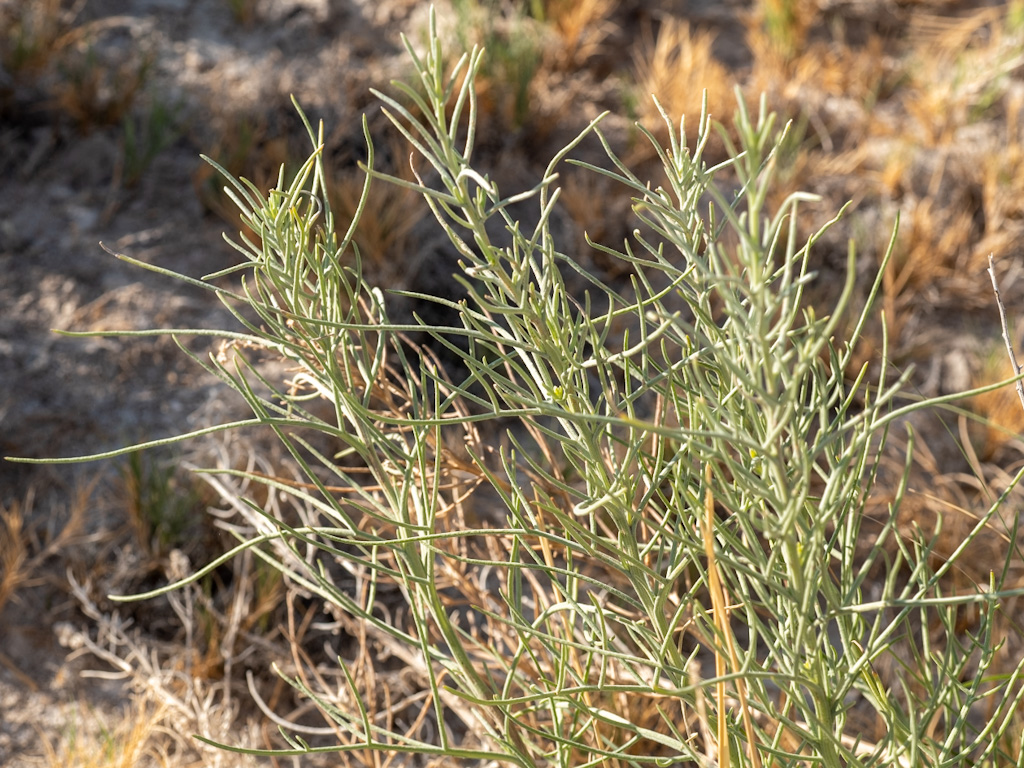
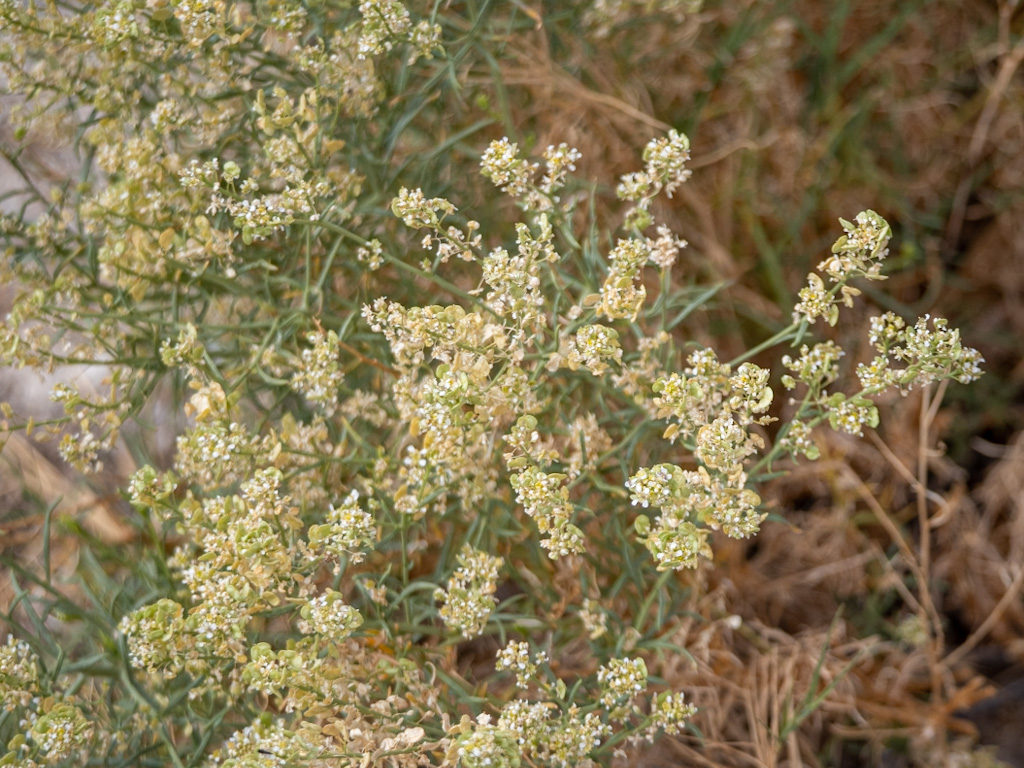
Cheesebush is native to deserts of the southwestern United States and northwestern Mexico. This species, notable for its foul smell, easily hybridizes with the white bur-sage (Ambrosia dumosa). It is typically 2’ to 3’ in height although it can form a sprawling bush up to eight feet high. It drops about half of its leaves and some of its twigs in hot, dry summer conditions (drought deciduous). It has thin stems and narrow, needlelike leaves. Leaves are narrow and needlelike (linear), thread-like (filiform), sometimes up to 2.6 inches (65 mm) long but a mere 0.059 in (1.5 mm) across. The foliage and stem tips have a foul, pungent, cheese-like scent when crushed, a trait which gives the plant the common name “cheesebush”. It flowers from March to June. Numerous small, cuplike male flowers grow in spike-like clusters above the female heads growing in the leaf axils.
Parish’s Wire Lettuce
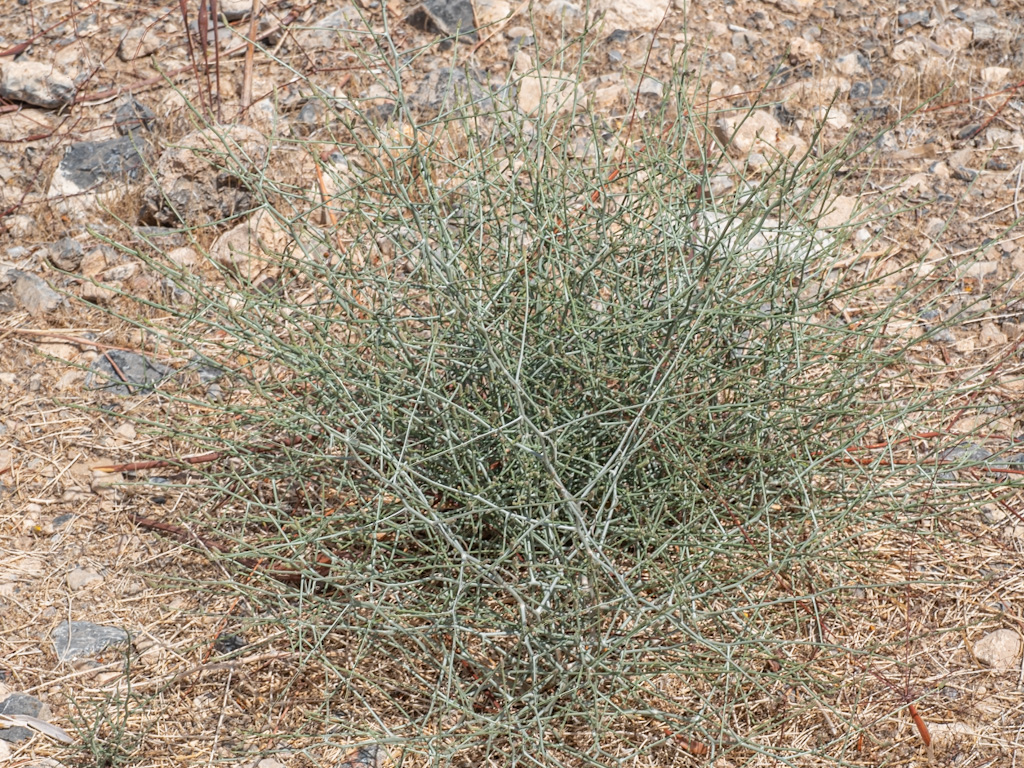
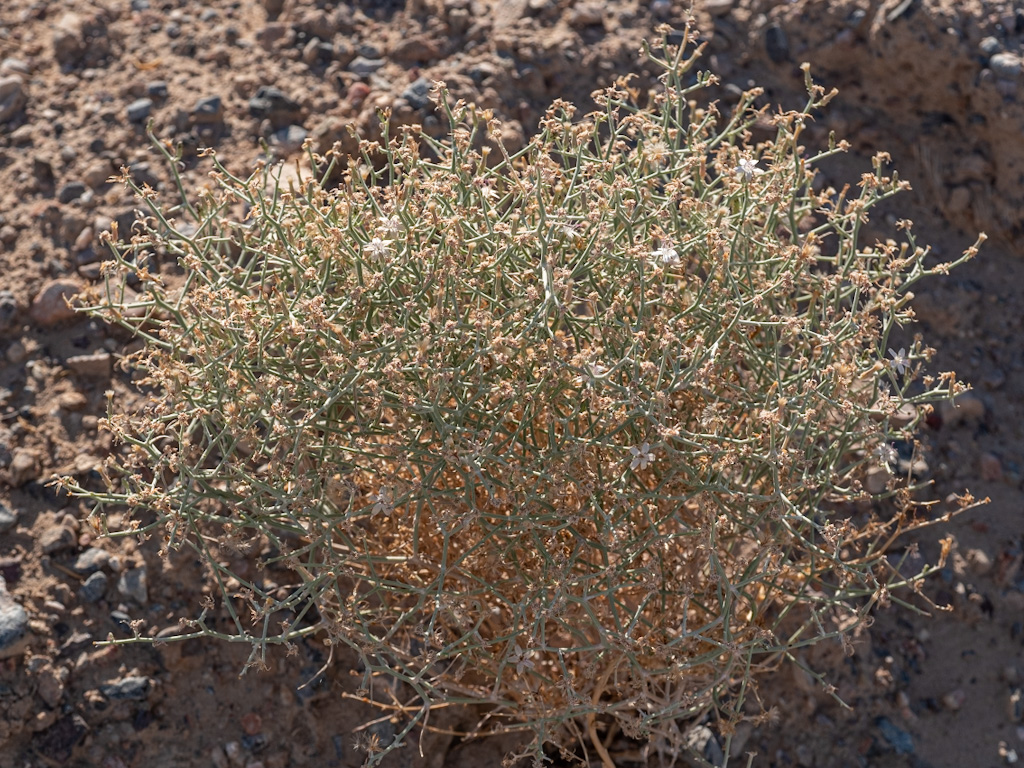
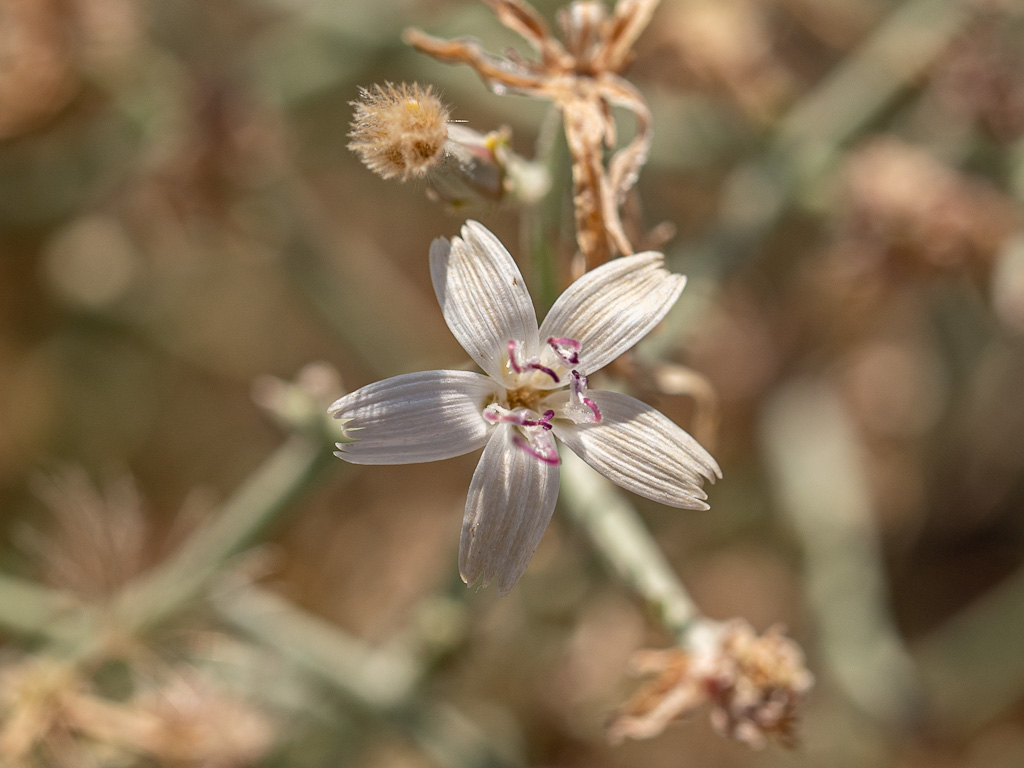
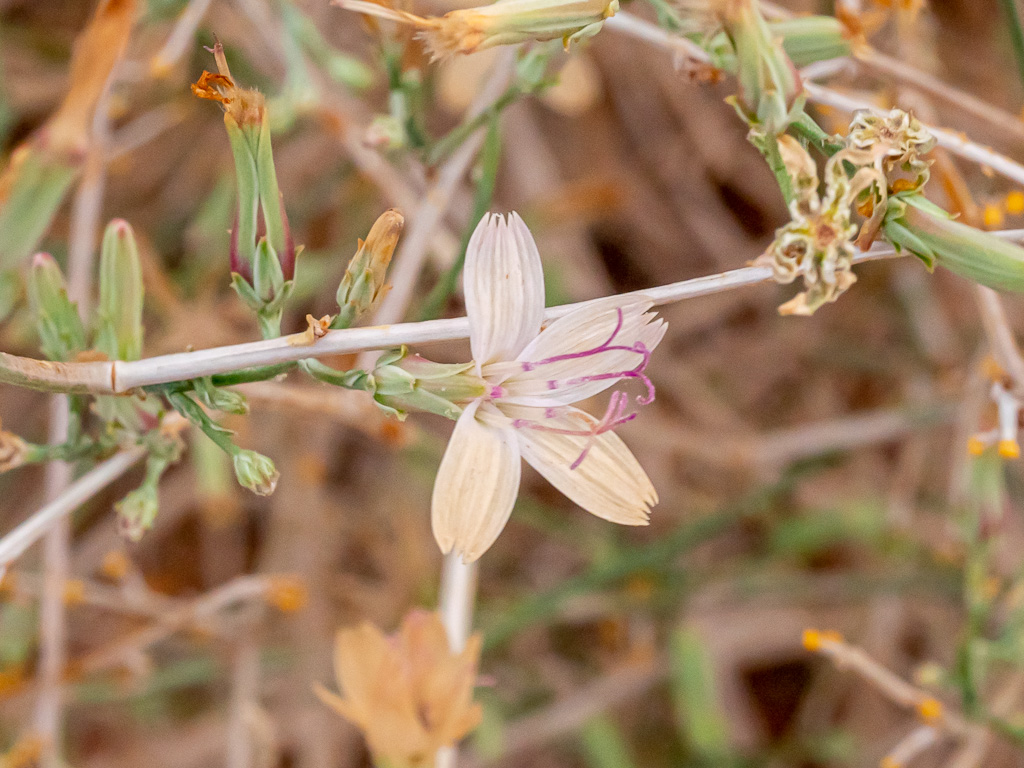
Stephanomeria pauciflora is a species of flowering plant in the aster family known by the common names brownplume wirelettuce, few-flowered wirelettuce, and prairie skeletonplant. It is native to the southwestern United States and northern Mexico, where it grows in many types of habitat, including many desert areas, woodlands, and plains. It is a perennial herb or bushy subshrub producing one or more sturdy, stiff stems with many spreading branches, taking a rounded but vertical form. The leaves are mostly basal and ephemeral, with smaller, scale-like leaves occurring on the upper stem. Flower heads occur at intervals along the mostly naked stems, especially near the tips.
California Desert Milkweed
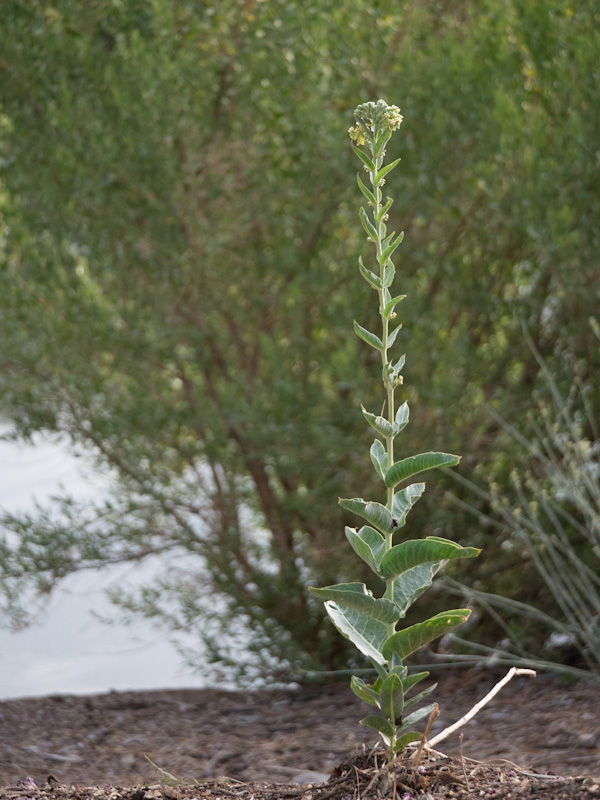
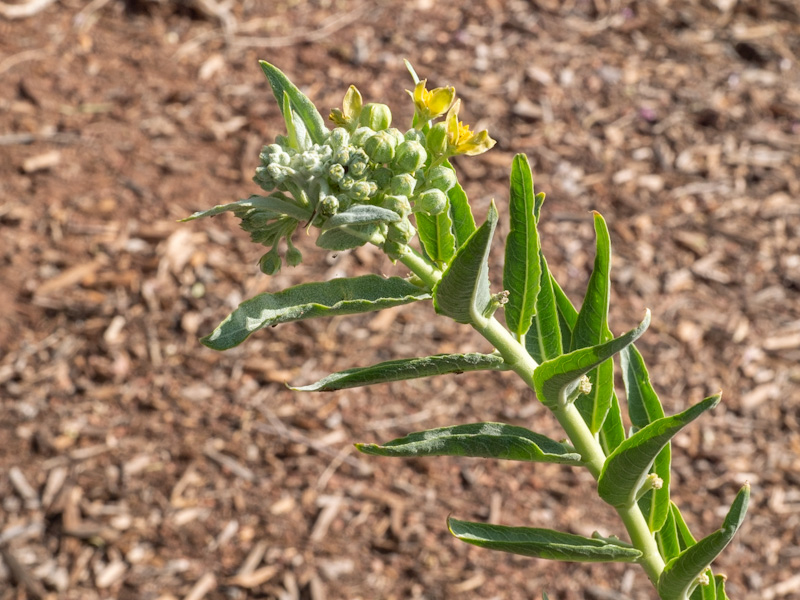
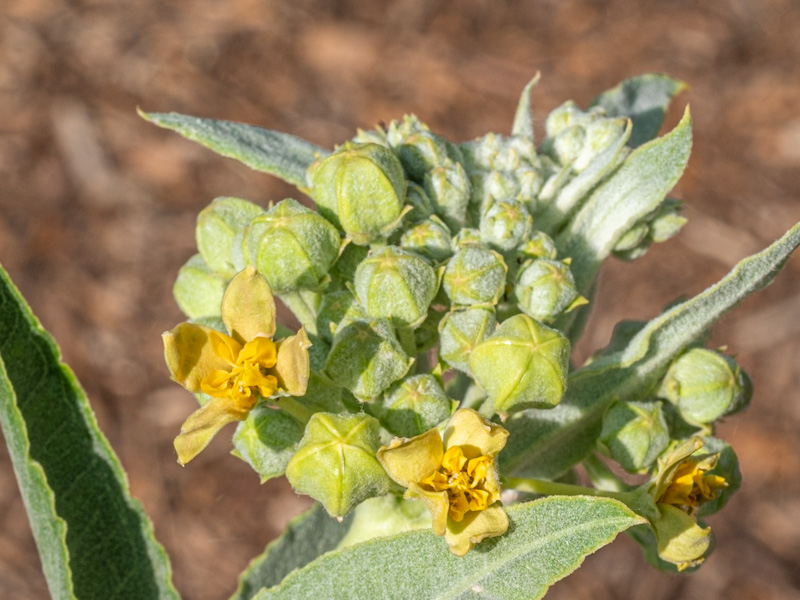
This milkweed, Asclepias erosa, is a perennial herb with erect yellow-green stems and foliage in shades of pale whitish-green to dark green with white veining. It may be hairless to very fuzzy. The sturdy, pointed leaves grow opposite on the stout stem. Atop the stem is a rounded umbel of yellowish or cream-colored flowers. Each flower has thick, reflexed corollas beneath a flower center composed of rounded, horned filaments. The plant is filled with a viscous sap that was roasted to a solid and enjoyed as a sort of chewing gum by local Native American groups. Asclepias erosa is a specific monarch butterfly food and habitat plant.
Giant Blazingstar
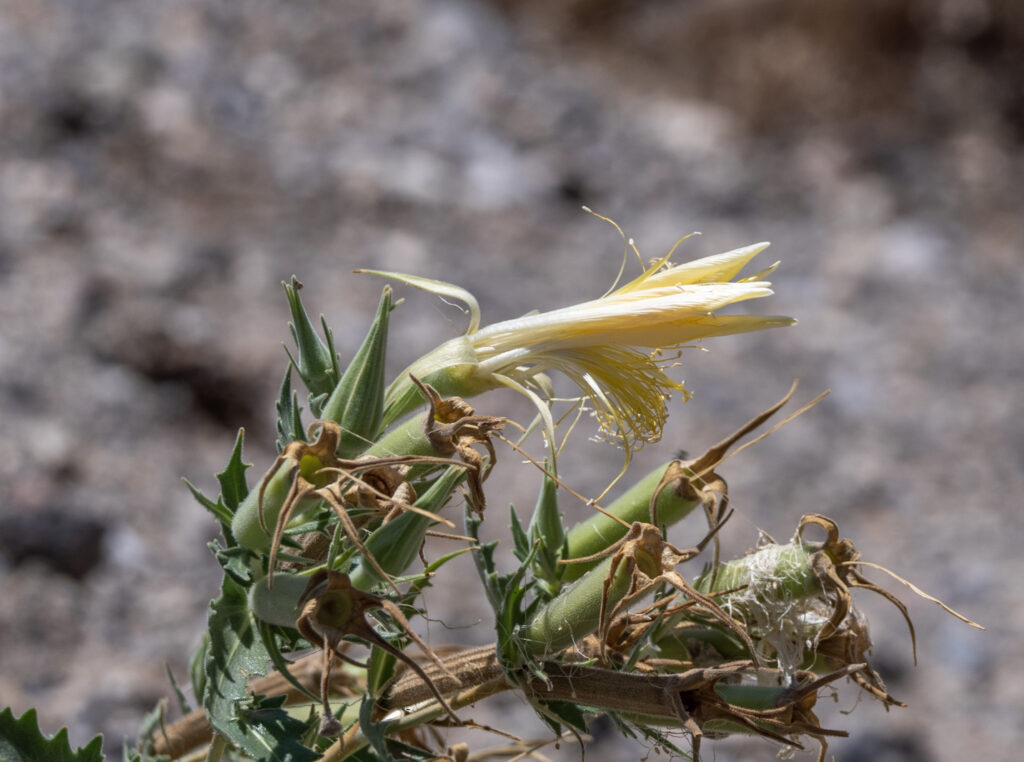
This is a widespread plant which can be found in sandy, rocky, and disturbed areas, such as roadsides. It grows a weedy-looking, branched stem which may reach a yard in height. The whitish-green stem and its lateral branches bear the occasional triangular sawtoothed leaf. The plant bears capsule fruits containing winged seeds. At the tip of each branch blooms a spectacular yellow flower. The star-shaped flower has five narrow, pointed petals with shiny yellow surfaces, each up to 3 inches long. Between the petals are long, thin yellow sepals. The center of the open-faced flower is filled with a great many whiskery yellow stamens. Beneath the petals are long, curling bracts.
Button Brittlebrush
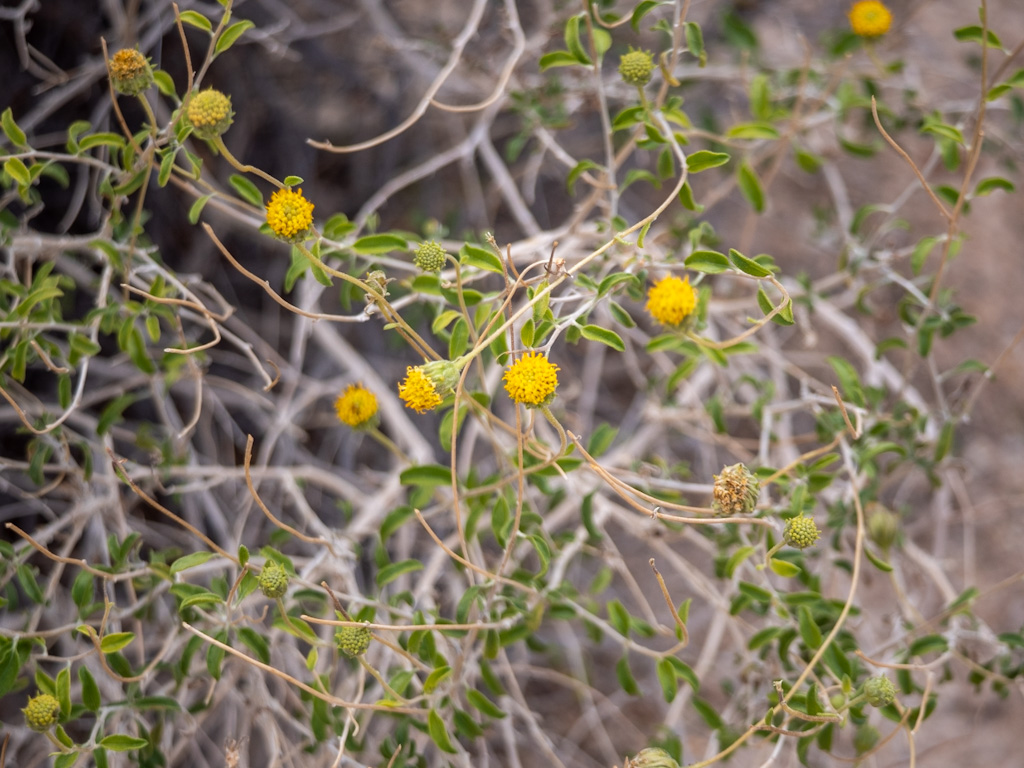
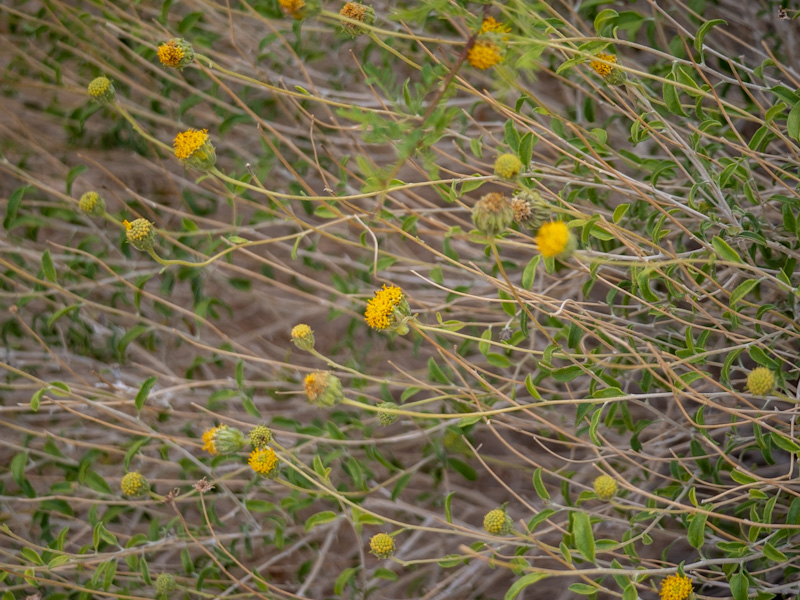
Encelia frutescens is a species of flowering plant in the family Asteraceae known by the common names button brittlebush and bush encelia.This is a plant of the deserts in the Southwestern United States, especially the Mojave Desert in California, and also Nevada and Arizona. The Encelia frutescens flower heads usually, but not always, lack ray florets and are composed of only a disc packed with disc florets. The leaves are rough and hairy. The flat, light fruits are wind dispersed. This is an occasional food plant for the desert tortoise. It is one of the first plants to colonize disturbed or burned sites.
Alkali Goldenbush
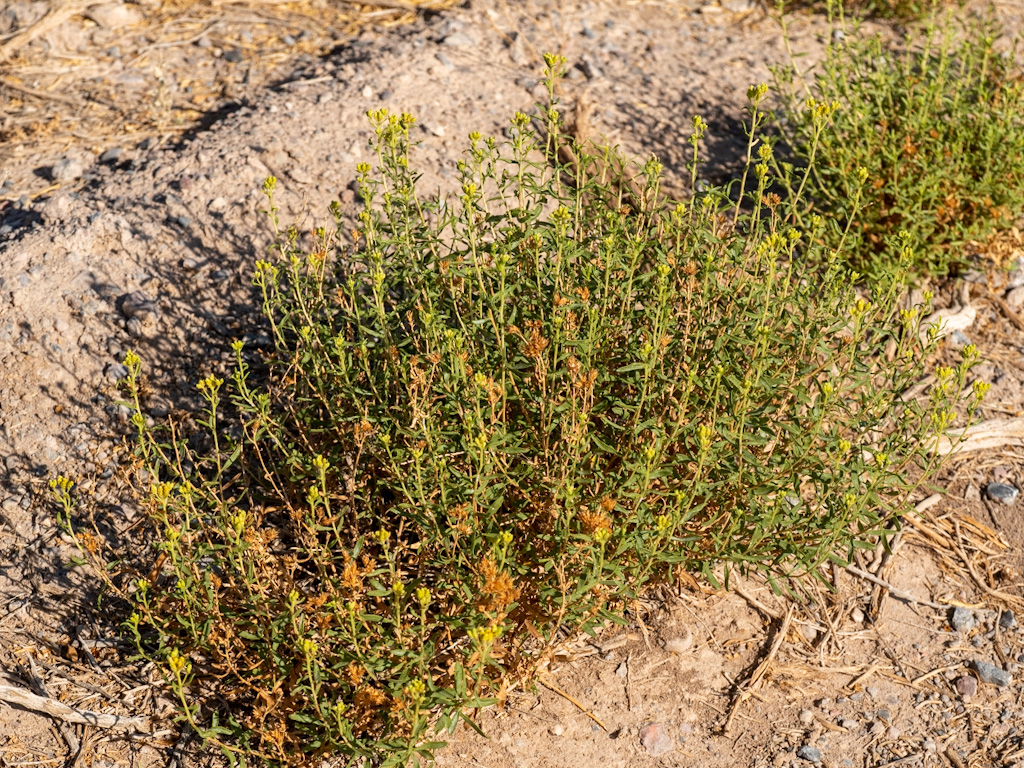
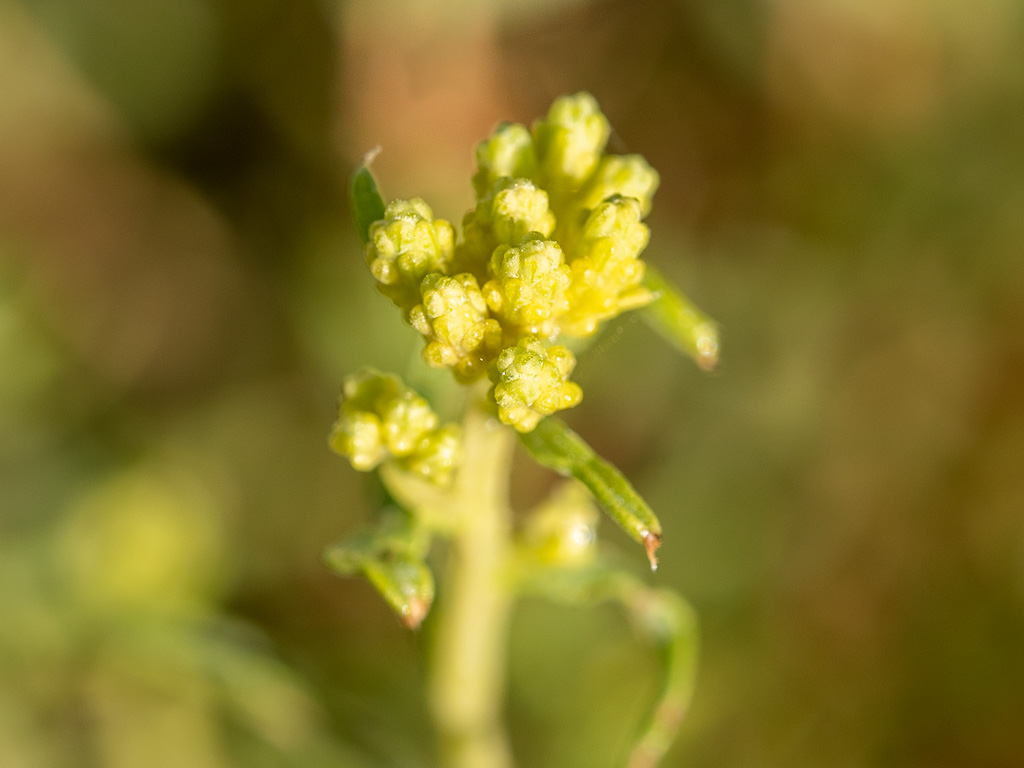
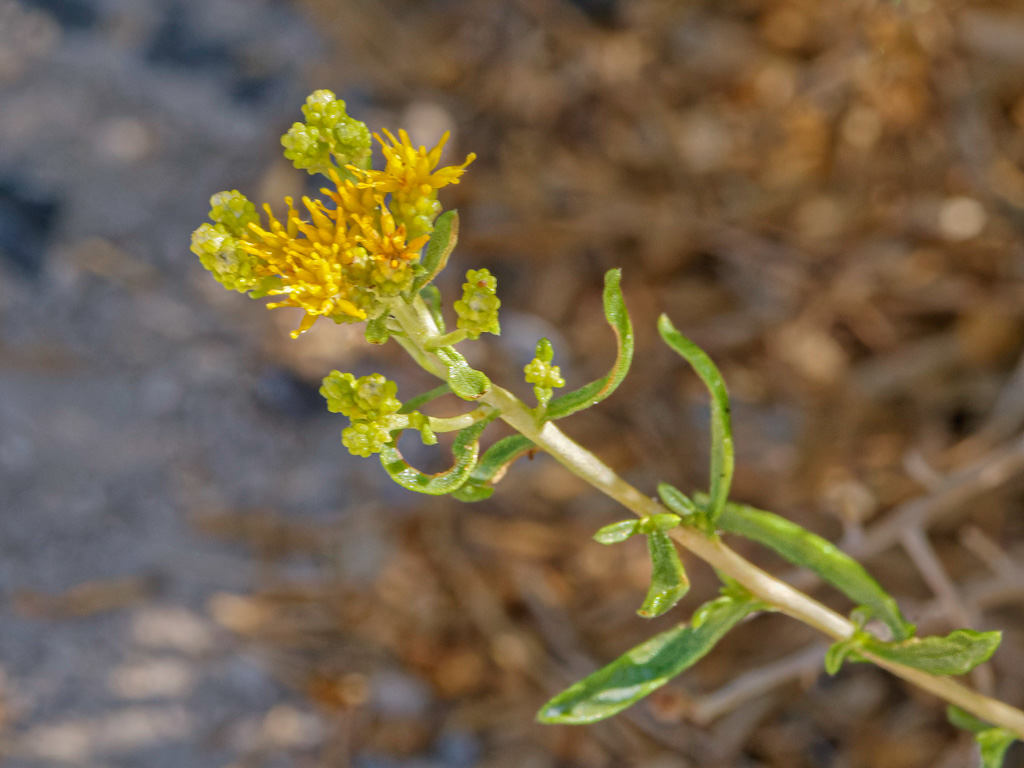
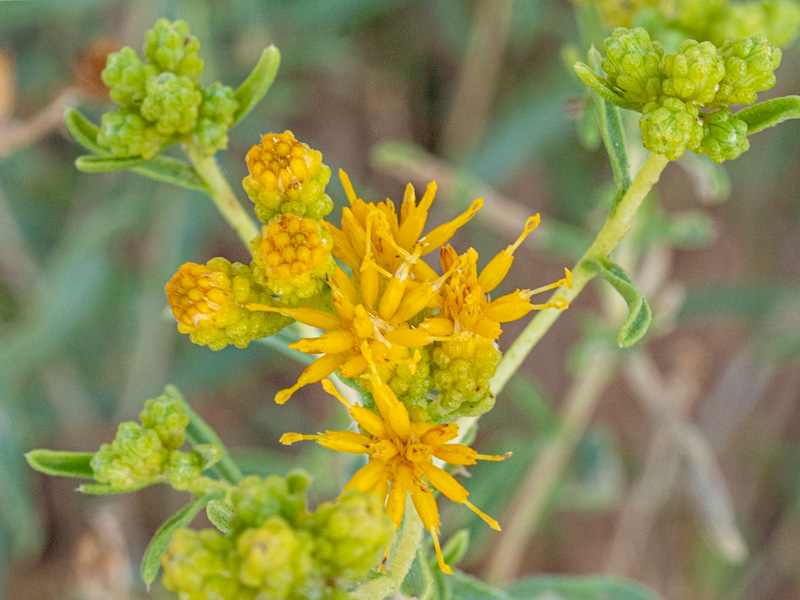
Isocoma acradenia is a bushy subshrub reaching maximum heights of slightly over 1 m (39 in). It produces erect, branching stems which are a shiny pale yellowish white, aging to a yellow-gray. Along the tough, hard-surfaced stems are linear or oval-shaped glandular leaves 0.39–2.36 inches (1–6 cm) long, sometimes with stumpy teeth along the edges. They are gray-green and age to pale gray or tan. The inflorescences along the top parts of the stem branches are clusters of four or five flower heads. Each head is a capsule encased in bumpy, glandular greenish phyllaries bearing many golden yellow disc florets at its mouth. Each disc floret is somewhat cylindrical and protruding. The fruit is an achene a few millimeters long, with a yellowish pappus adding another few millimeters.
Desert Marigold
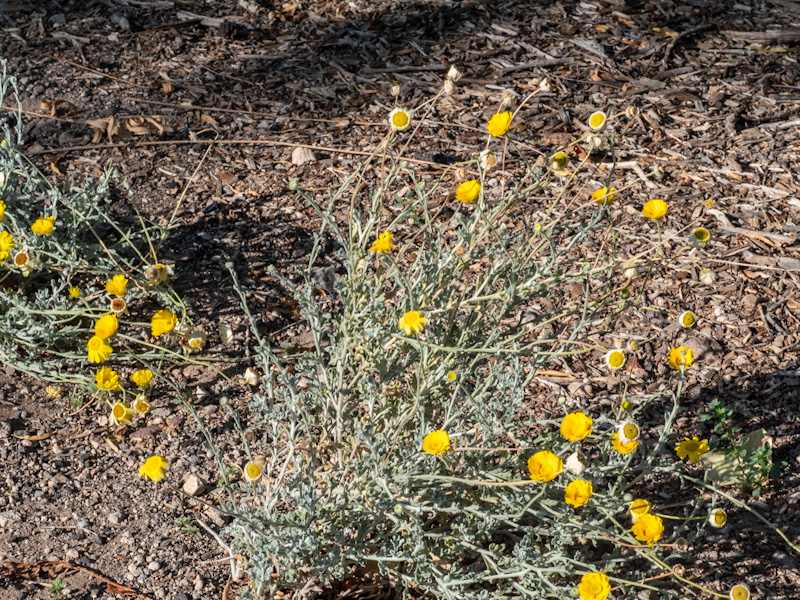
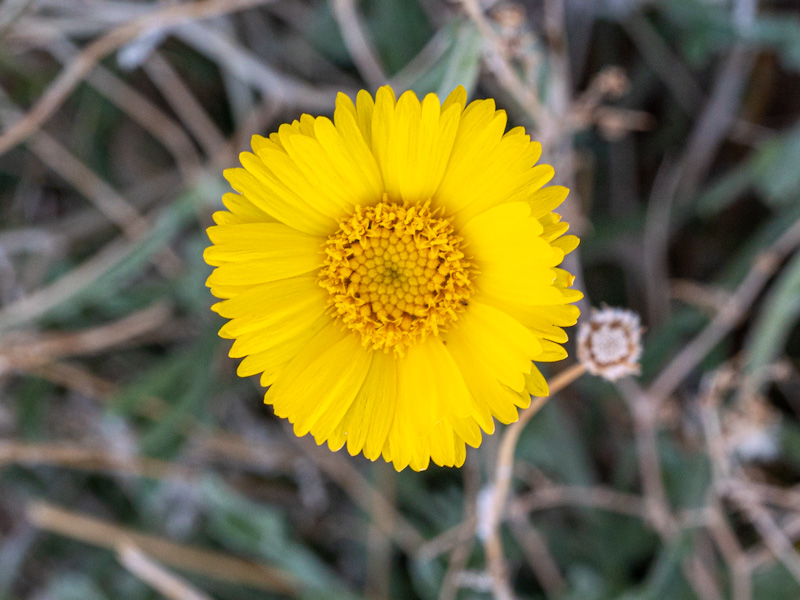
The desert marigold (Baileya multiradiata) is a member of the Asteraceae family. The members of this family are characterized by individual florets arranged in dense heads making the floret group look like one single flower. On the marigold the clusters form a head 2 inches in diameter and are bright yellow in color. The leaves are green with silver-white hairs, lobed, and grow very low on the thick stems. Desert marigolds can be found across southern Arizona, southern Nevada and southwestern Utah, south into Sonora Mexico, and through the Chihuahuan Desert to Texas.
Ash Meadows Sunray
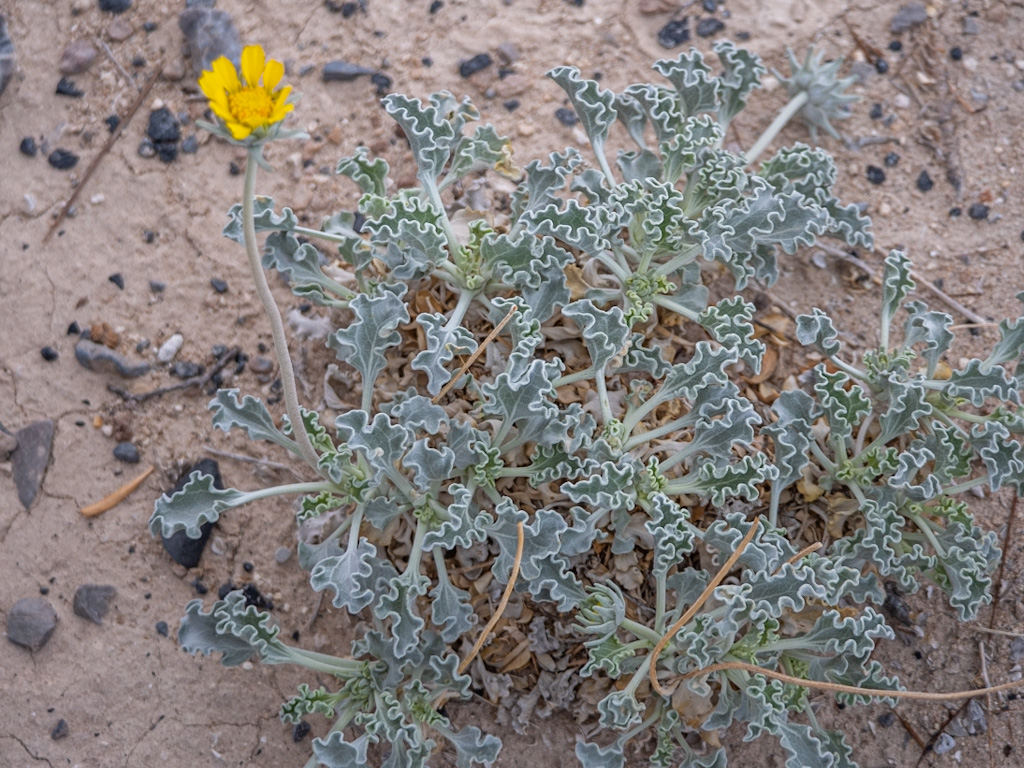
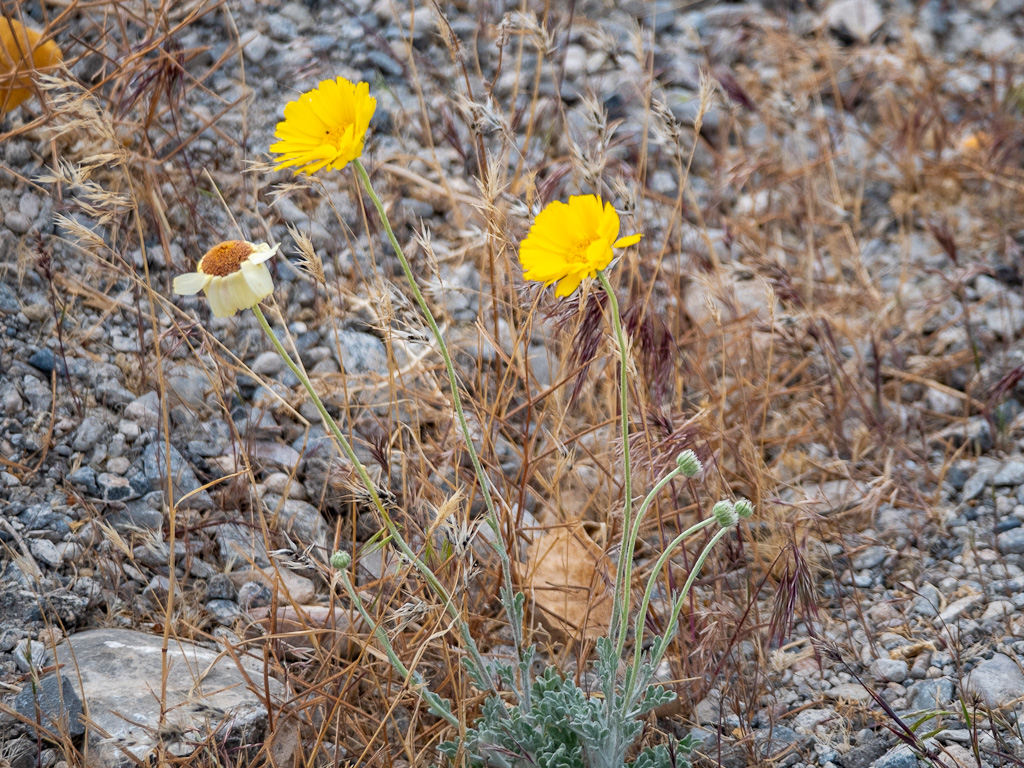
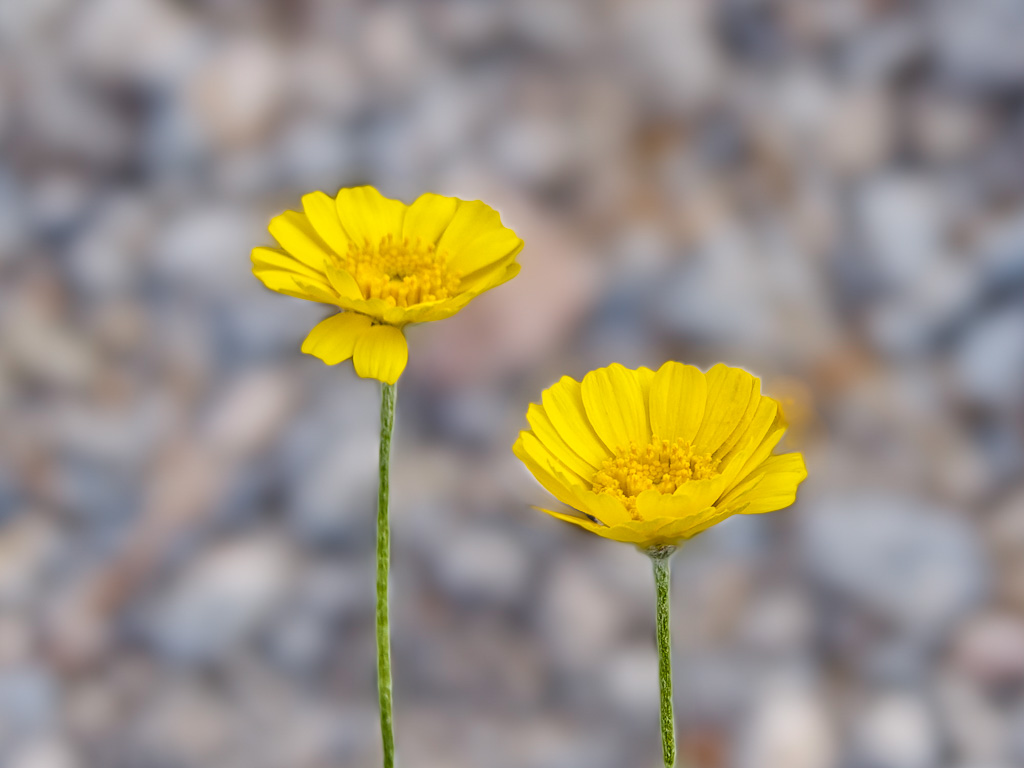
Enceliopsis nudicaulis is a perennial herb growing up to 45 centimeters (18 inches) tall from a woody caudex fringed with gray-green hairy leaves. The leaves are oval and up to 6.5 cm (2+1⁄2 in) long and wide. Blooming from May to August, the inflorescence is a solitary flower head atop a tall, erect peduncle. The flower head is 3–4 inches (7.5–10 cm), it has a base made up of three layers of densely woolly, pointed phyllaries. It has a fringe of approximately 21 yellow ray florets each 0.75–1.5 inches (2–4 cm) long. The fruit is a hairy achene about 0.5 inches (1 cm) in length. Enceliopsis nudicaulis var. corrugata, the Ash Meadows sunray – the rarer variety, which is probably endemic to Nevada in the vicinity of Ash Meadows in the Amargosa Desert is federally listed as threatened.
Threadleaf Ragwort
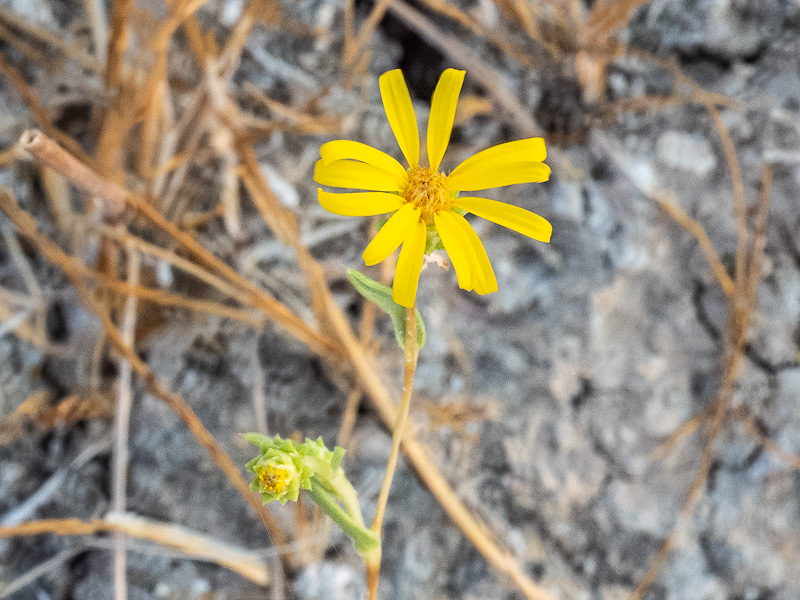
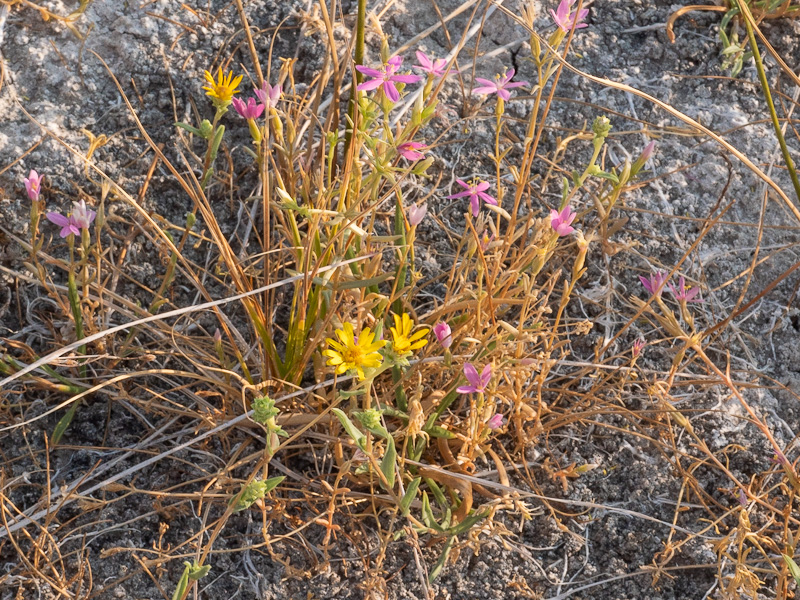
Senecio flaccidus, formerly recorded as Senecio douglasii (in honor of the botanist David Douglas), member of the daisy family and genus Senecio also known as threadleaf ragwort. It is a native of the southwestern Great Plains of North America. Branched and bushy, Senecio flaccidus gets its common name from its white, threadlike, bent and matted, tomentose leaves; alternate and deeply pinnate, divided into five to nine narrow linear segments, glabrous, having no hairs or projections, gray-green above, 1-4 inches (2.5 to 10.2 cm) long. Showy flowering heads of yellow ray flowers, 3–4 inches (7.6–10.2 cm) across; eight to thirteen sterile rays, purplish brown disk florets that produce the seeds. Threadleaf ragwort is a fast-growing, short-lived (3 to 6 years) bushy perennial shrub growing to 4 feet (1.37 m); common in gravelly washes, dry creek beds, along roads and trails and mostly away from the coast. As you can see from the above photo, at Ash Meadows, it is often found with Spring-loving Centaury (Zeltnera namophila).
Ash Meadows Gumplant
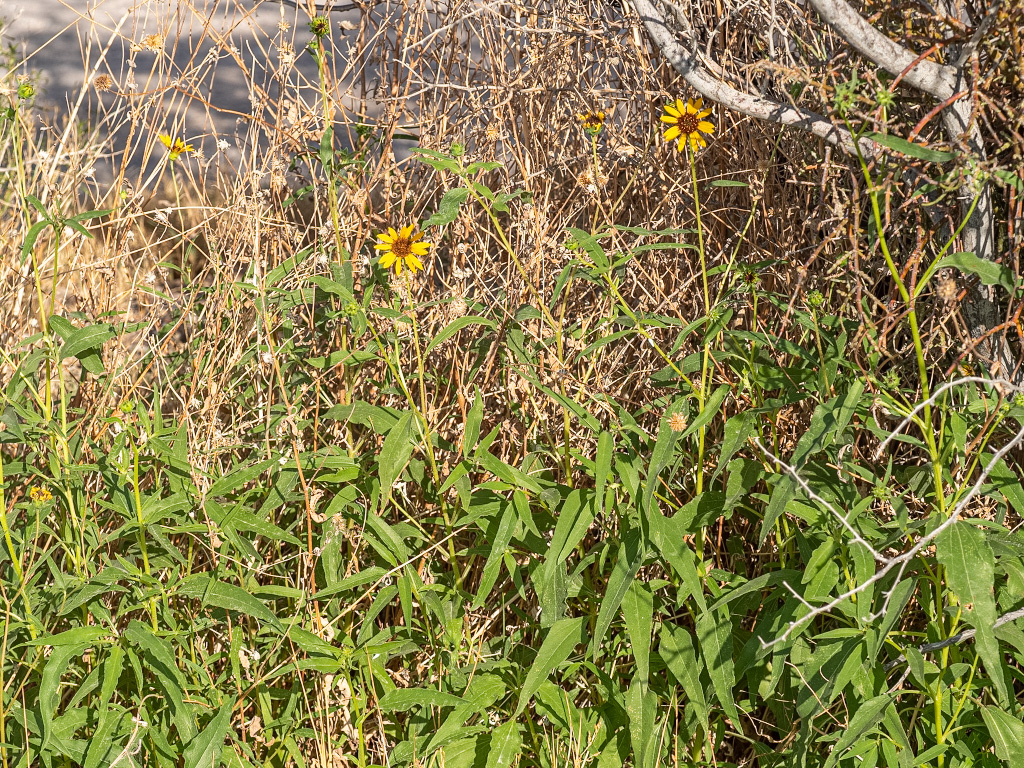
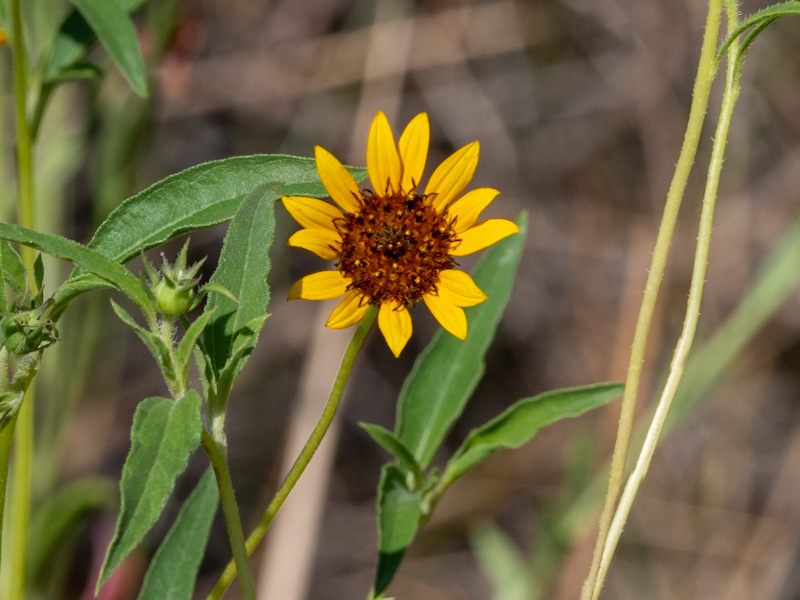
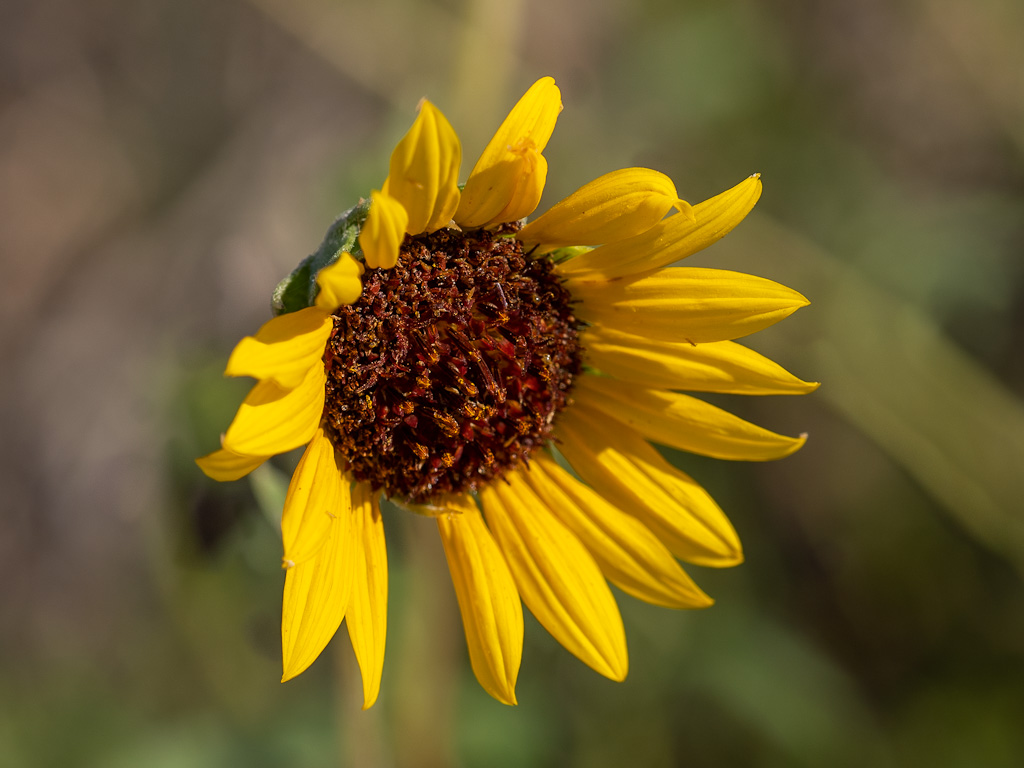
Grindelia fraxinipratensis grows in meadows and on the borders of woodlands. It is a biennial or perennial herb growing 19.5–47 inches (50–120 cm) tall, erect in form, brown or reddish, and hairless and oily. It grows from a thick underground caudex atop a woody taproot. The dark green leaves are up to 3 inches (7 cm) long, widely lance-shaped or oblong, sometimes toothed near the tips, and studded with visible resin glands. The inflorescence bears one to four flower heads lined with thick phyllaries. The head contains about 15 yellow disc florets surrounded by about 13 yellow ray florets each about 4 millimeters (0.16 inches) long. The fruit is an achene with a pappus made up of two awns. Grindelia fraxinipratensis is native to the Amargosa Valley along the southern part of the border between California and Nevada, where it is known from only 14 to 16 locations.[8] Many are found within the Ash Meadows National Wildlife Refuge in the Amargosa Desert area.
Curly-top Gumweed or Curlycup Gumweed
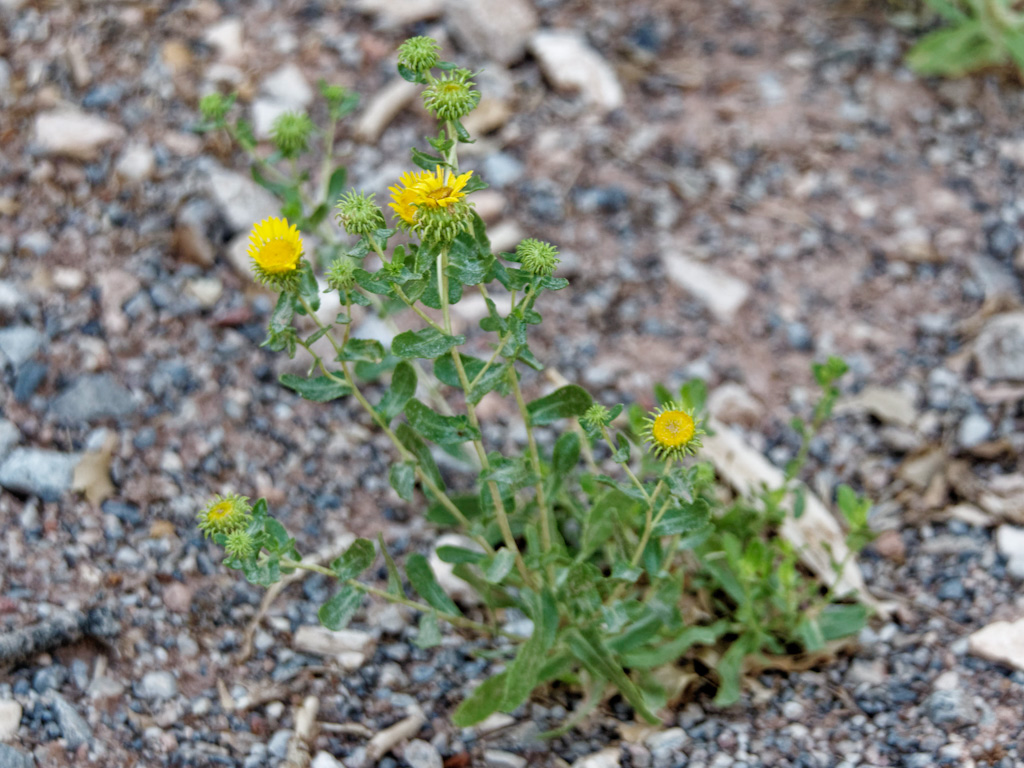
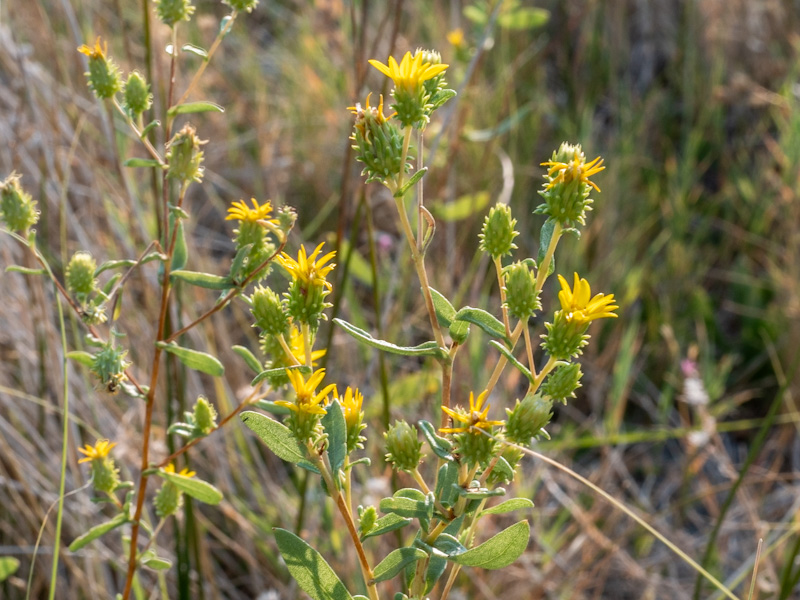
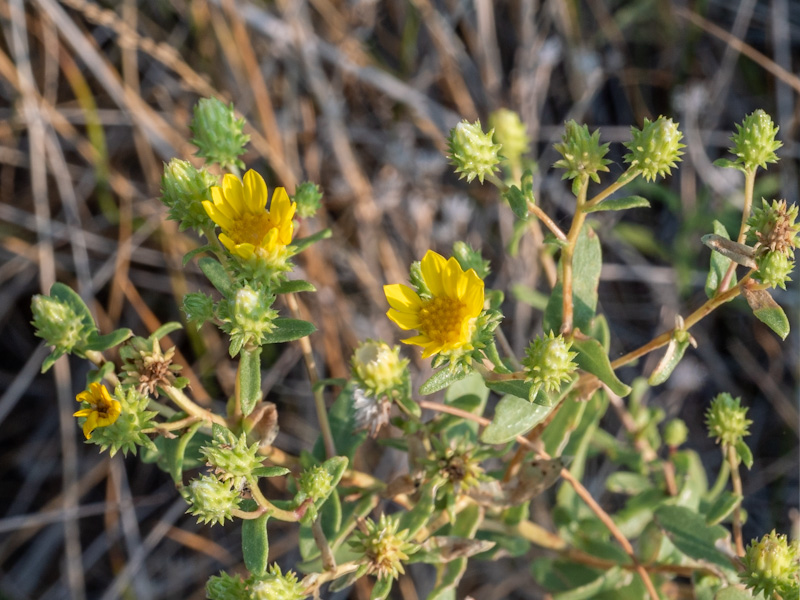
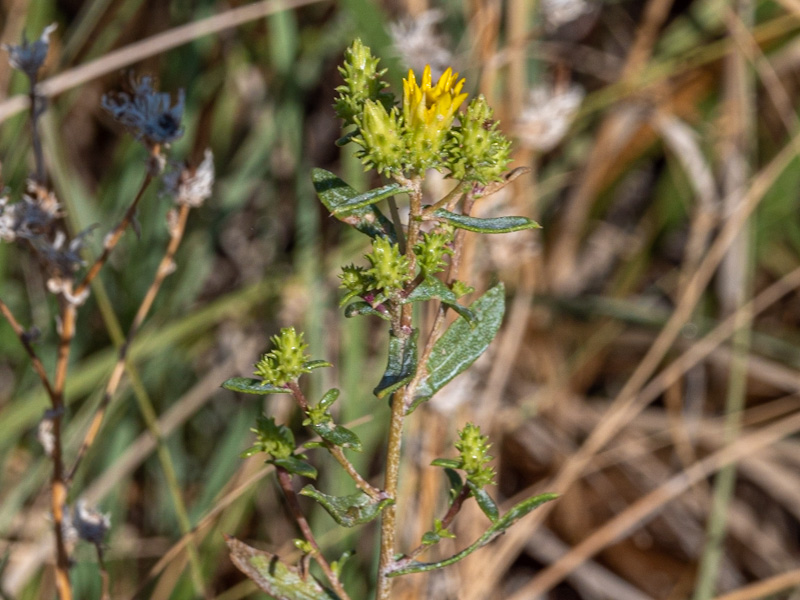
Grindelia squarrosa, also known as a curly-top gumweed or curlycup gumweed, is a small North American biennial or short-lived perennial plant. is a decumbent to erect, much-branched perennial herb or subshrub growing up to 3 feet (100 cm) tall. The leaves are up to 3 inches (7.5 cm) long, gray-green, crenate with each tooth having a yellow bump near its tip, and resinous. The plant produces numerous flower heads in open, branching arrays. Each head usually contains 12–40 yellow ray flowers, though sometimes the rays are absent. These surround many small disc flowers. The plant blooms from July through late September. The brown seed is usually four-angled, with loose scales. The species is native to western and central North America, from British Columbia east to Québec and New England, and south as far as California, New Mexico, Arizona, Chihuahua, and Texas. The plant concentrates selenium from the soil, and can be toxic when ingested by cattle, humans, and other mammals.
Mohave Stinkweed
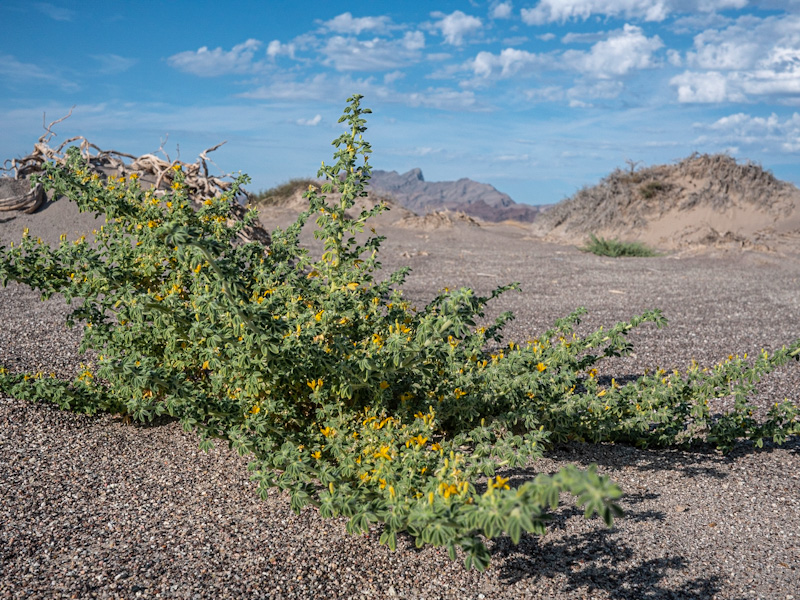
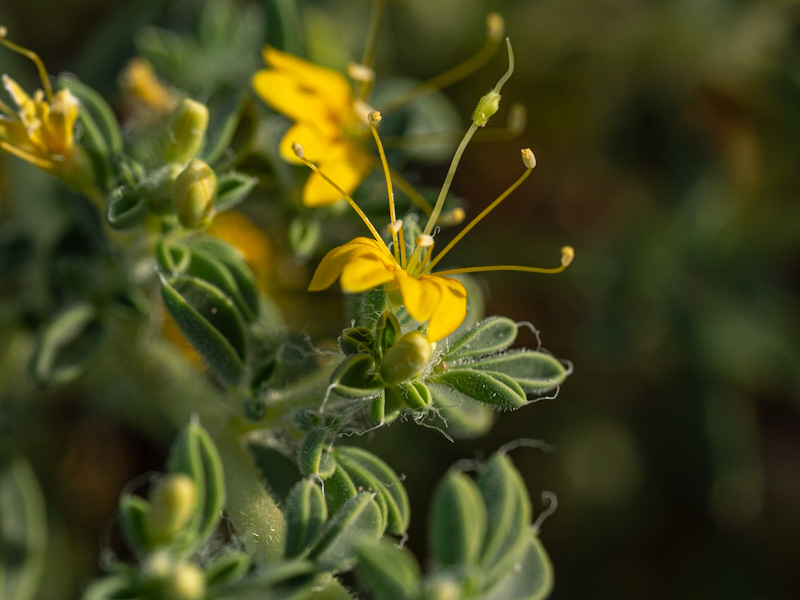
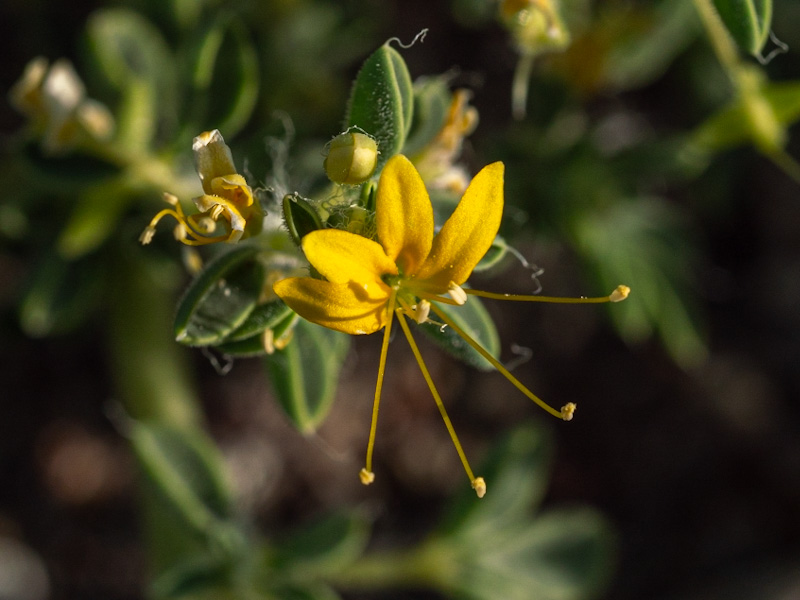
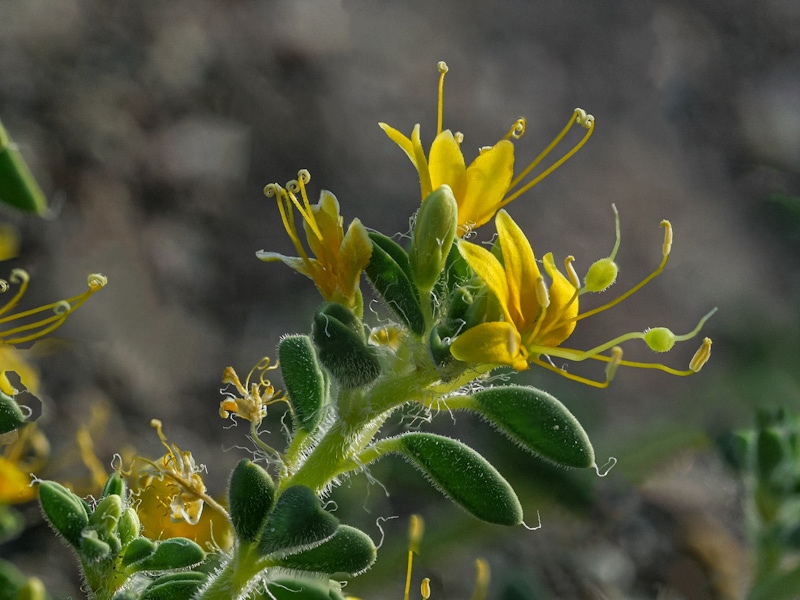
Cleomella obtusifolia is a species of flowering plant in the cleome family known by the common name Mojave stinkweed. It is native to the Mojave Desert and adjacent hills, where it grows in alkaline soils in the desert scrub. It is an annual herb producing a rough, hairy stem up to 90 centimeters long. The branching stem grows erect when new and then the branches droop to the ground with age, forming a bushy clump or mat. Each leaf is made up of three fleshy oval leaflets. Flowers appear in dense racemes on older stems and solitary in leaf axils on new stems. Each flower has generally four hairy green sepals and four yellow petals grouped together on one side of the involucre. The whiskery yellow stamens protrude up to 1.5 centimeters from the flower. The fruit is a hairy, valved capsule a few millimeters in length. It hangs at the tip of the remaining flower receptacle.
Princes Plume
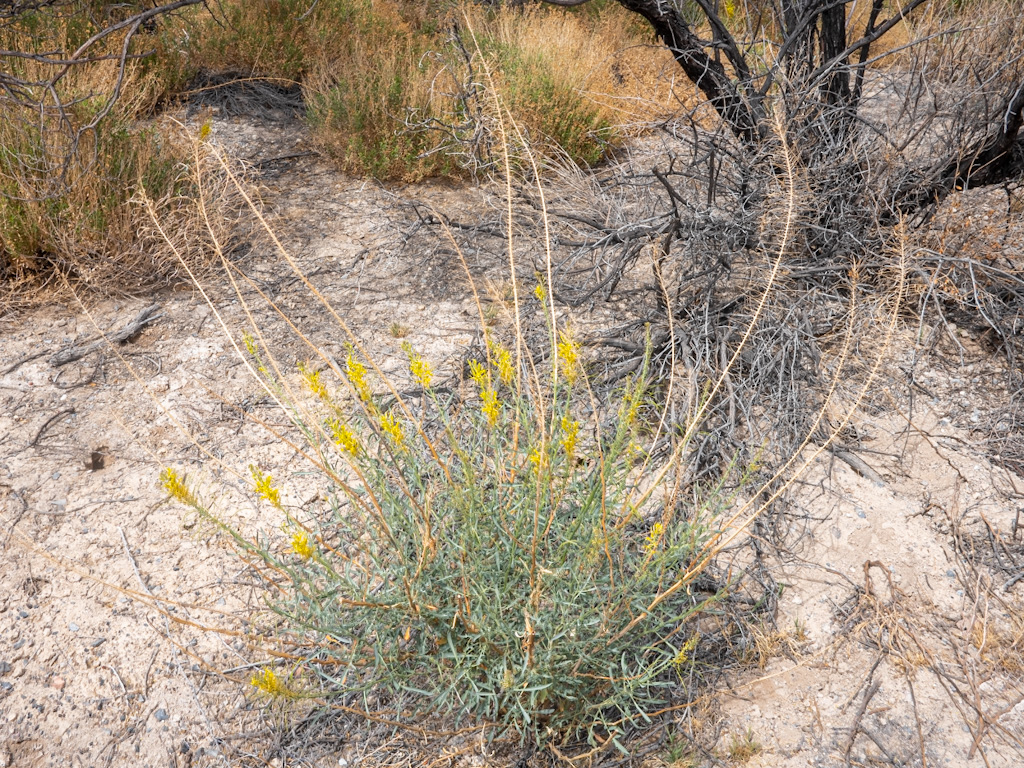
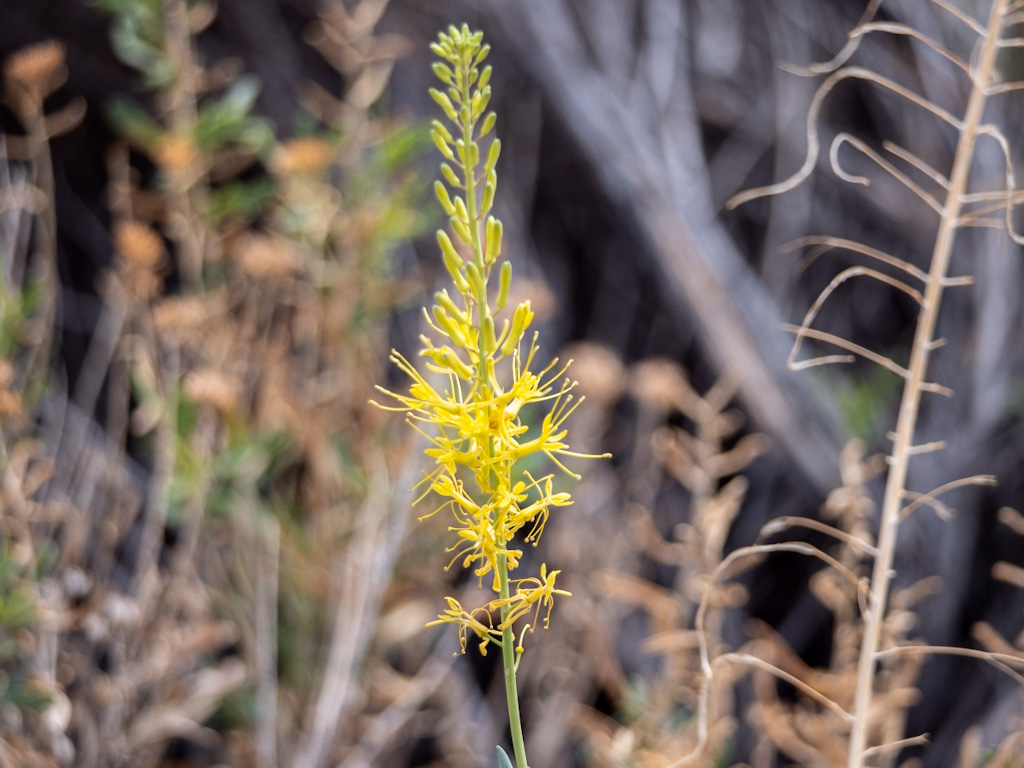
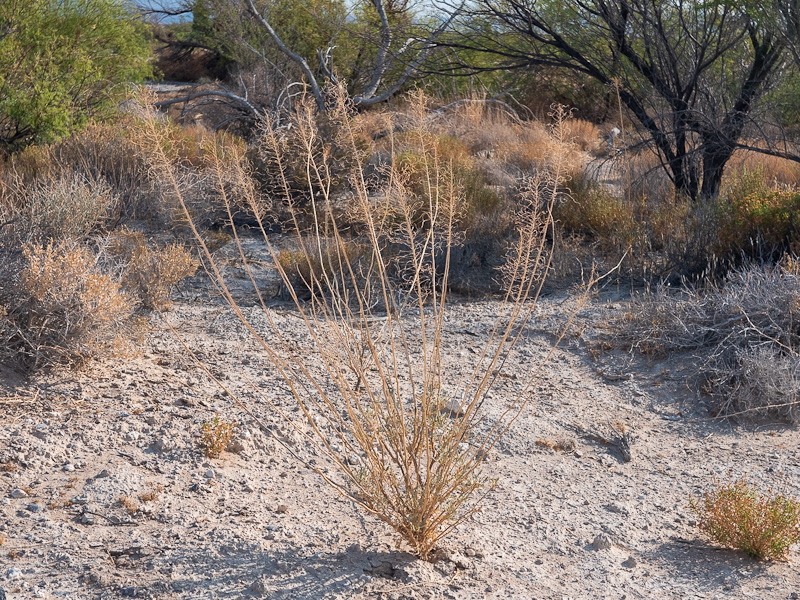
Stanleya pinnata is a perennial herb or shrub producing several erect stems reaching up to about 4.5 feet (1.5 m) in maximum height. The stems are unbranched, hairless, often waxy in texture, and have woody bases. The leaves have fleshy blades up to 15 centimeters long by 5 wide which are divided into several long, narrow lobes. The blades are borne on petioles. The top of the stem is occupied by a long inflorescence which is a dense raceme of many flowers. Each flower has four narrow yellowish sepals which open to reveal four bright yellow petals each up to 2 cm long. The stamens protruding from the flower’s center may approach 3 cm in length. The fruit is a curving, wormlike silique up to 8 cm long. The plant is native to the western Great Plains and western North America. Some of the plant’s amino acids use selenium from the soil in place of sulfur, making it highly toxic to animals.
Desert Trumpet
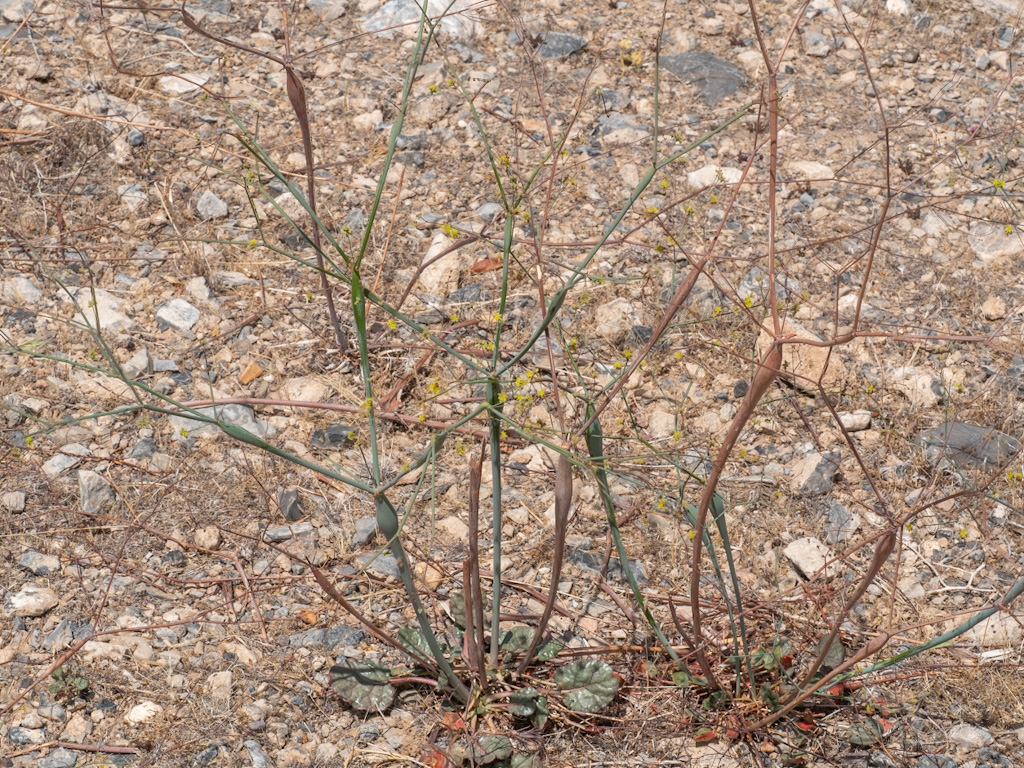
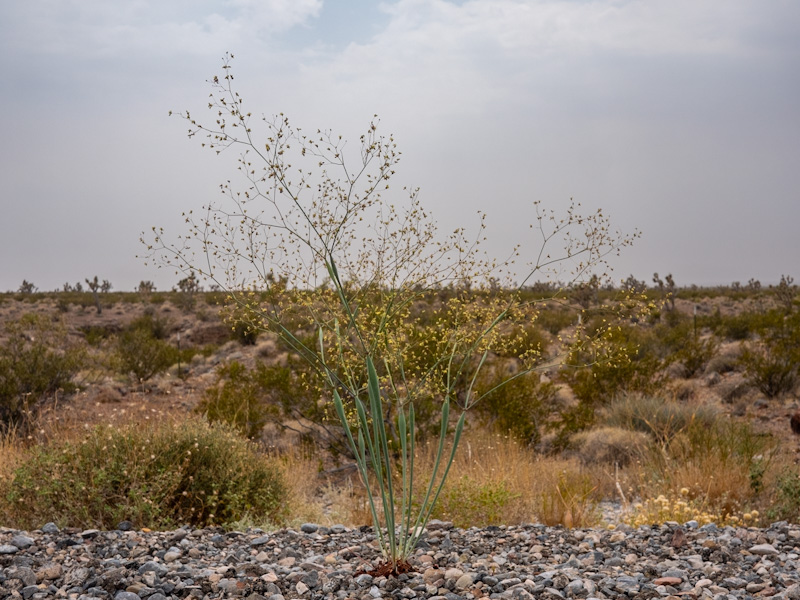
Eriogonum inflatum, the desert trumpet, is a perennial plant of the family Polygonaceae. Spoon-shaped leaves lie flat against the ground and send up forked and reforked branches, the main branches conspicuously inflated. From branch tips are borne small, graceful clusters of yellow-green, tubular flowers. The plant possesses very small yellow or pink flowers and an inflated stem just below branching segments. Recently, research performed by a world authority on the genus Eriogonum, Dr. J. L. Reveal of the University of Maryland, College Park, revealed the swollen stem of Eriogonum inflatum is due to high concentrations of carbon dioxide in the solid stem and seems to be related to gas regulation. Some insects utilize the swollen stem as a larder, but the inflation is not caused by the larval feeding of gall insects.
Copperweed
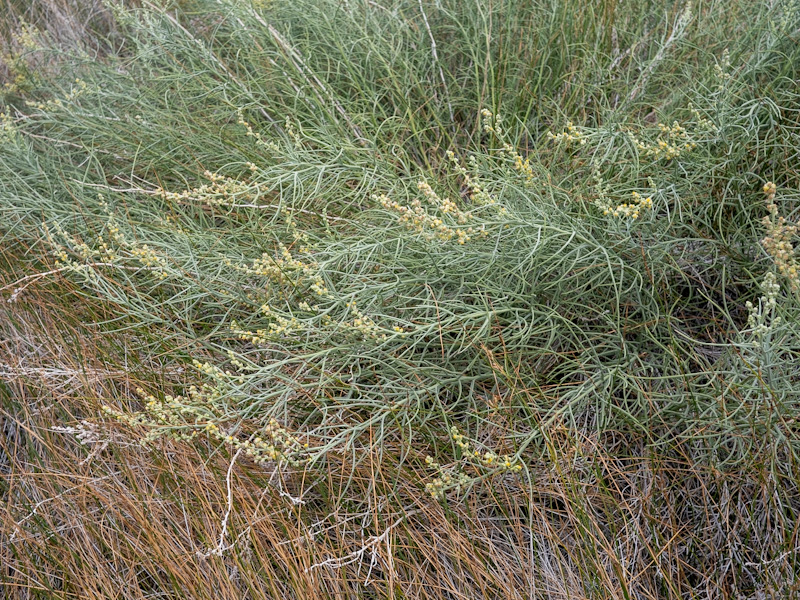
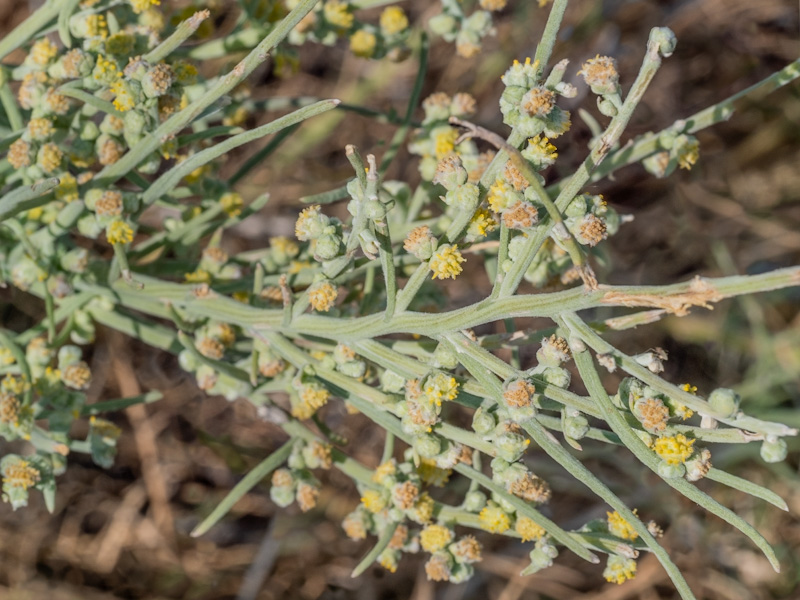
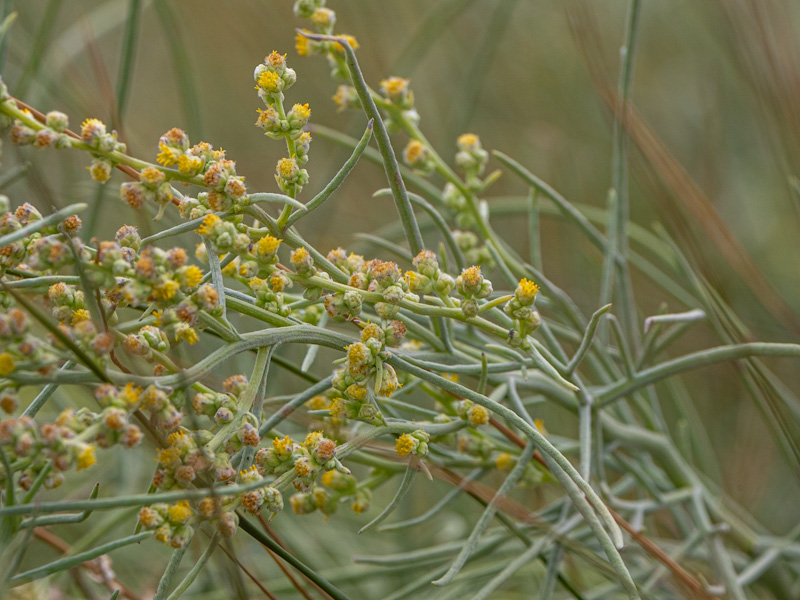
Euphrosyne acerosa is a perennial growing in washes in three foot tall and wide massive clumps of multiple unbranched stems. Numerous elongated, branched clusters of minute flowers top each of the many stems. From a distance and at first glance one might take the plant for Stanleya pinnata, especially because of its feathery appearance, but a close-up look quickly shows the differences. It is native to the south-western United States California, Nevada , Utah, western Colorado, Arizona and north-western New Mexico.
Spring-loving Centaury
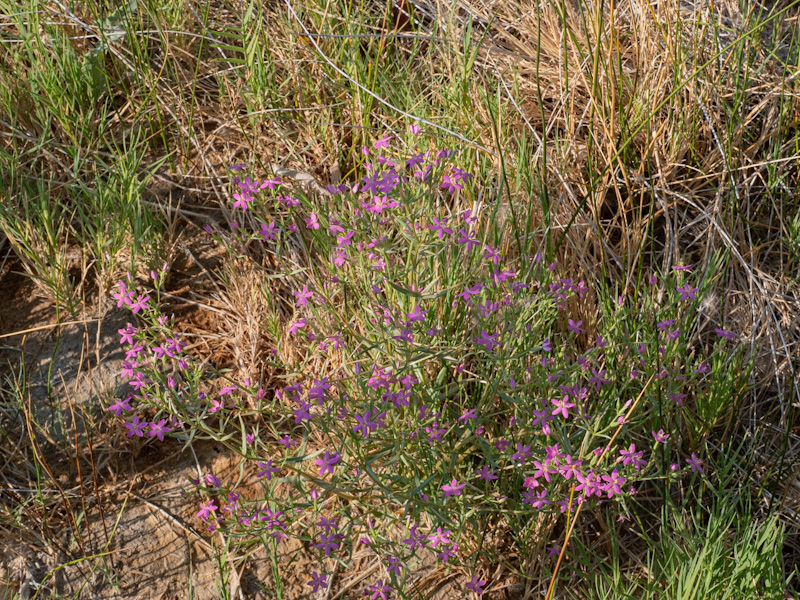
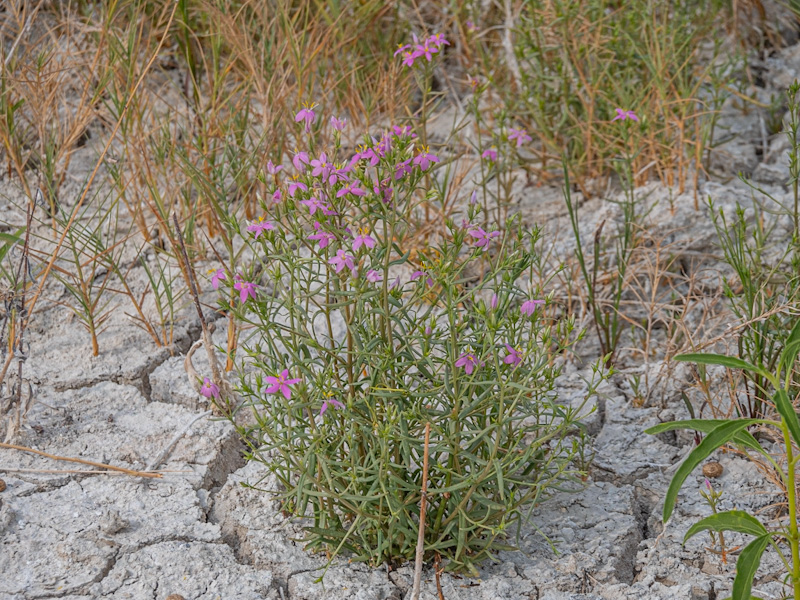
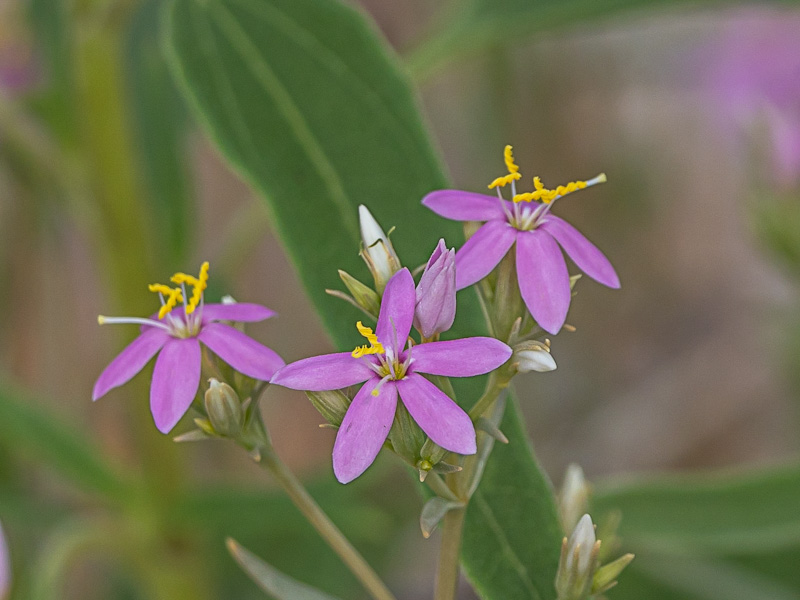
Zeltnera namatophila, the spring-loving centaury, is a rare species of flowering plant in the gentian family. It is endemic to the Amargosa Valley, in Nye County, southwestern Nevada. Zeltnera namatophila is an annual herb producing a branching stem up to 45 centimeters tall. The plant blooms during the heat of summer, from July to September. The flowers are tiny, less than 0.5 inches (1 cm) wide with a deep pink corolla tinged yellow in the throat. The fruit is a capsule containing about 50 seeds, and each plant can produce many capsules.
Mojave Thistle
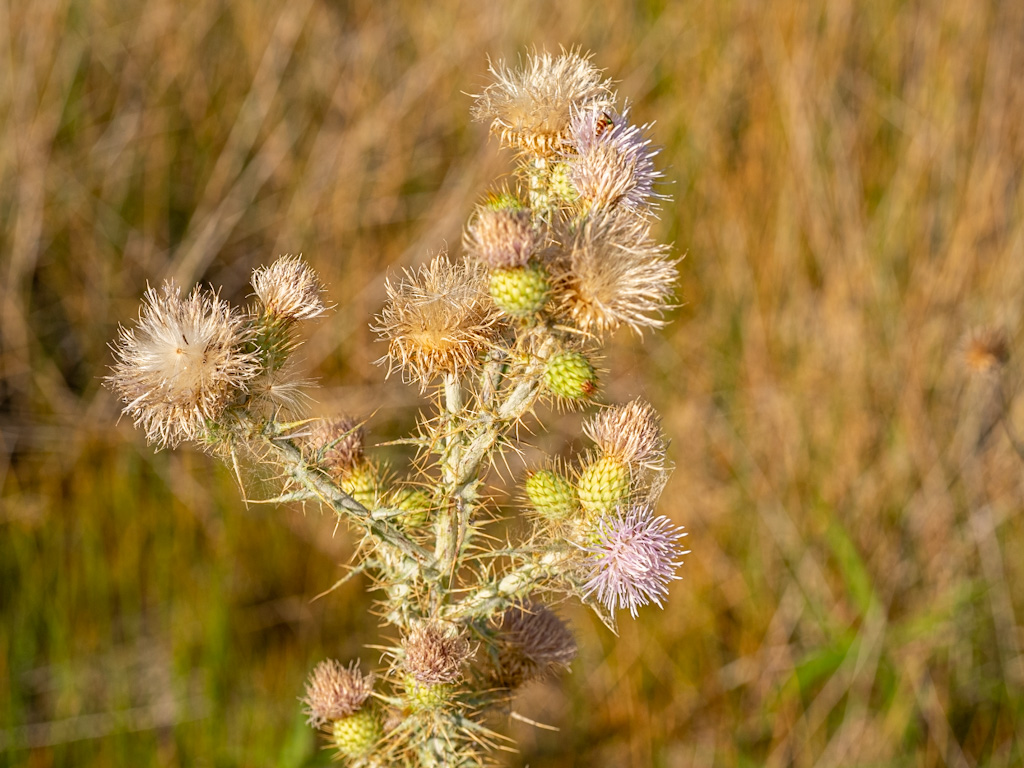
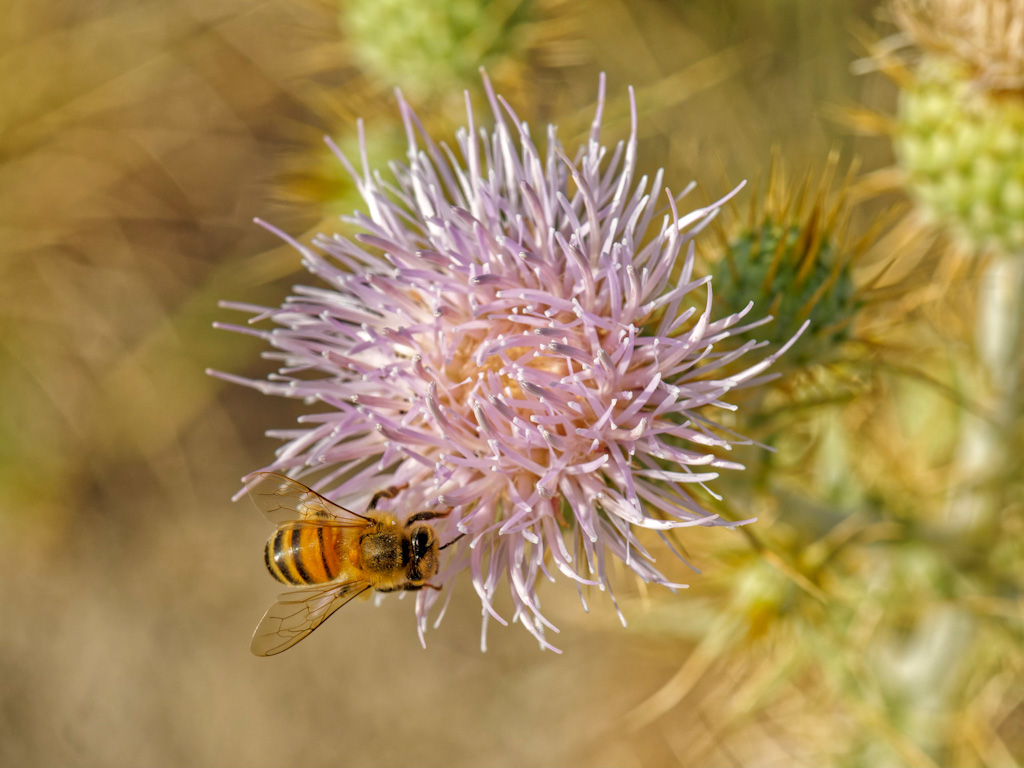
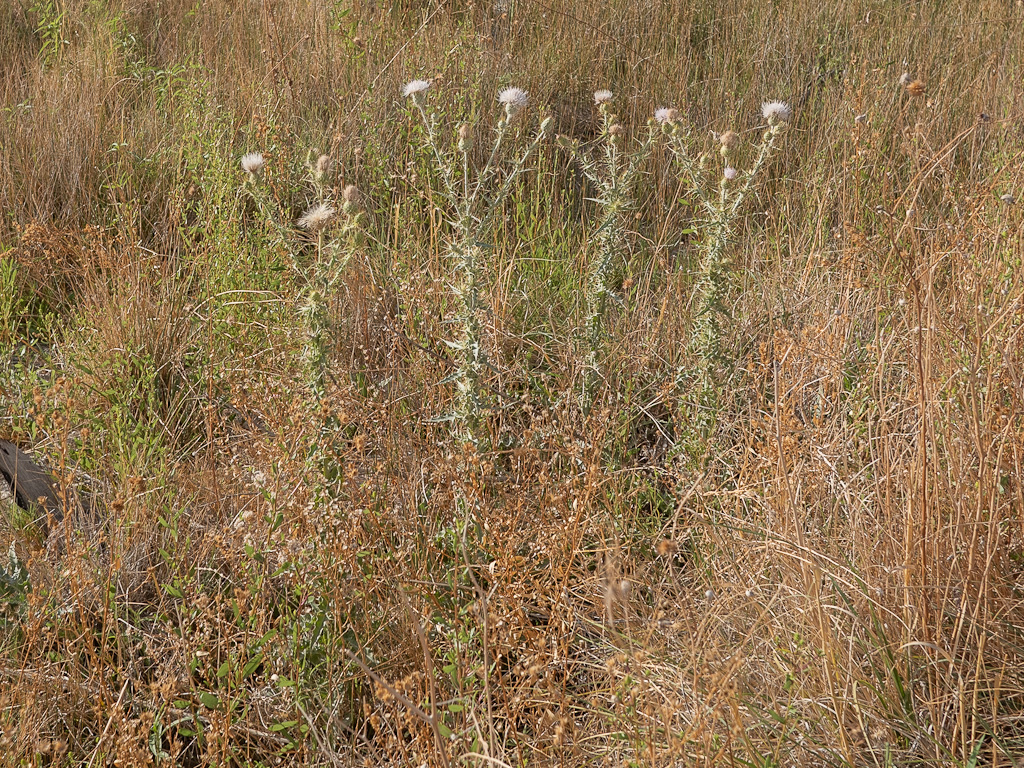
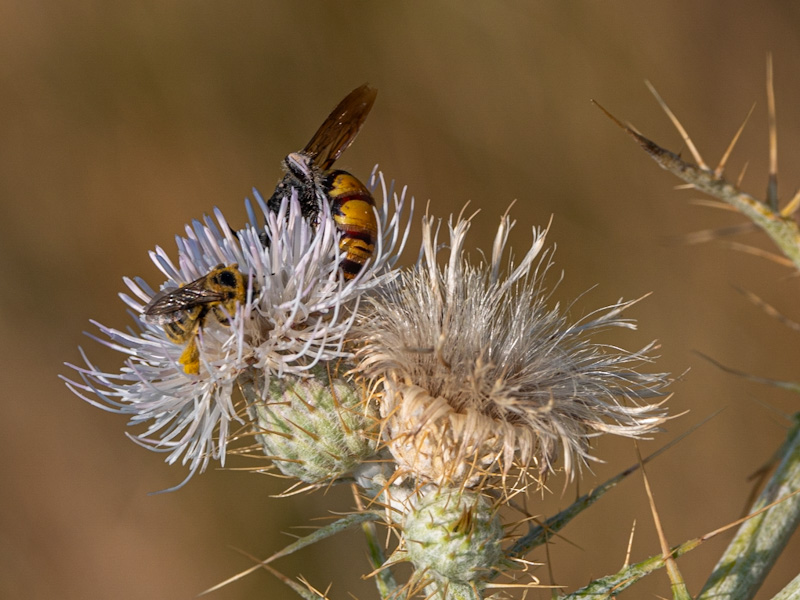
Cirsium mohavense is a species of thistle known by the common names virgin thistle and Mojave thistle. It is native to the southwestern United States, where it grows in moist areas in otherwise dry habitat, such as desert springs. It is most common in the Mojave Desert, found also in the southern Great Basin and other nearby regions of California, Nevada, western Arizona, and southwestern Utah.
Western Sea-purslane
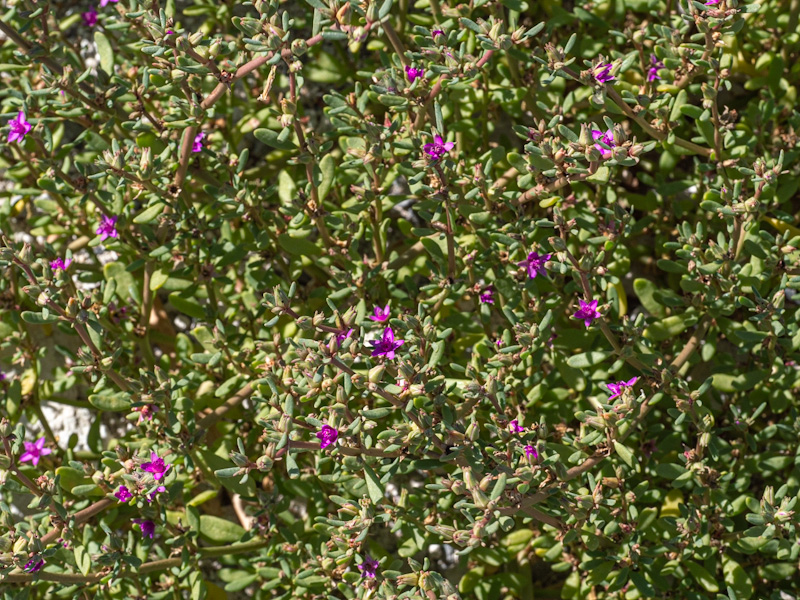
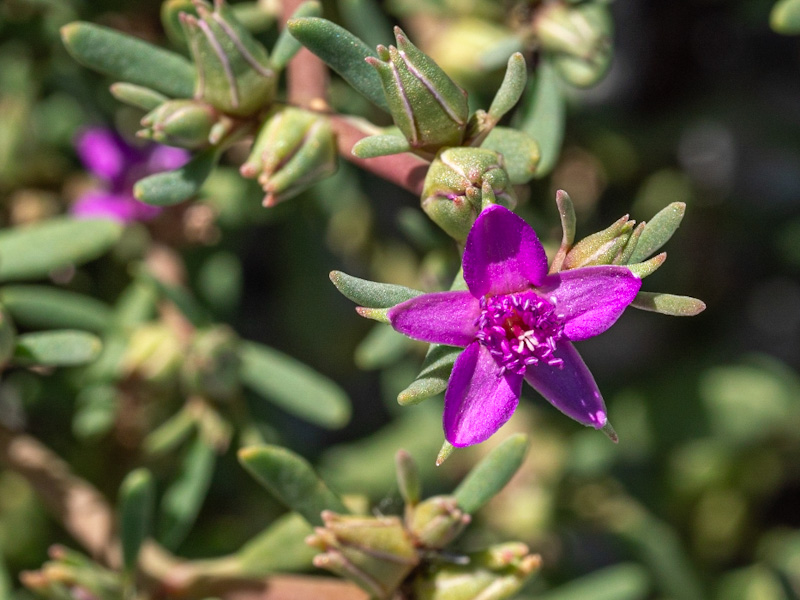
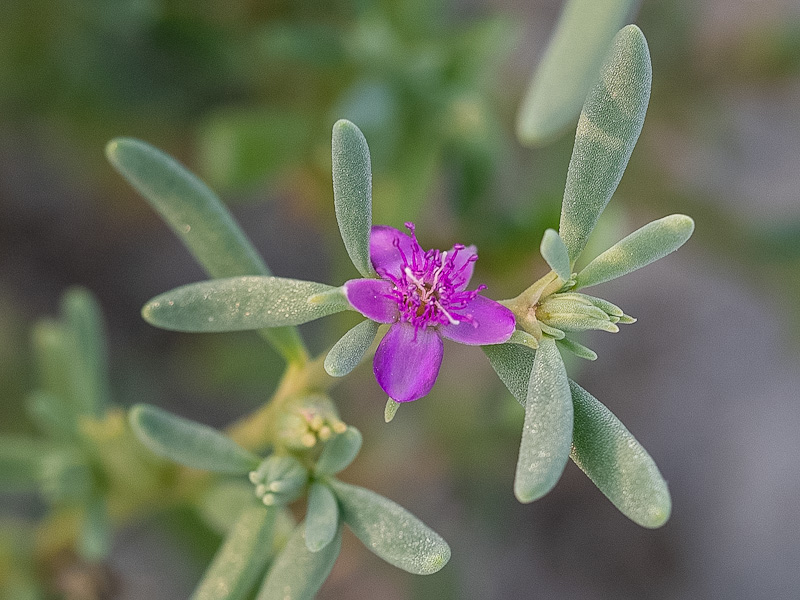
Sesuvium verrucosum is a species of flowering plant in the family Aizoaceae known by the common names western sea-purslane and verrucose sea-purslane. It is a perennial herb producing many branching prostrate stems up to 3 feet (1 m) long, forming a mat up to 2 m (6+1⁄2 ft) tall and wide. The gray-green herbage is verrucose, covered densely in crystalline bumps. The stems are lined with leaves of varying shapes which measure up to 1.5 inches (4 cm) long. The flowers, about 0.5 inches (1 cm) across, occur in the leaf axils. They have no petals, but the five, pointed sepals are generally bright pink to reddish or orange in color with a thick, verrucose outer surface. At the center of the flower is a ring of stamens around the central ovary. The fruit is a capsule about 50 cm (20 in) long, containing many seeds.
California Loosestrife
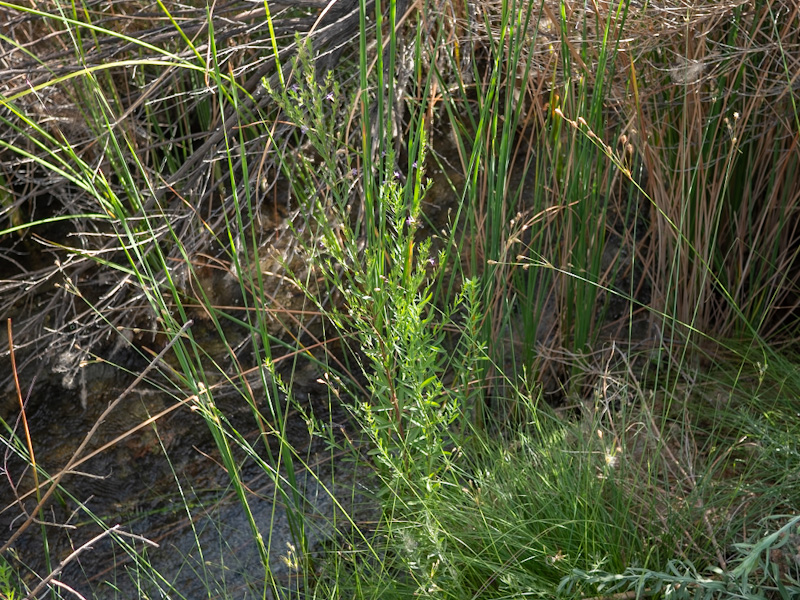
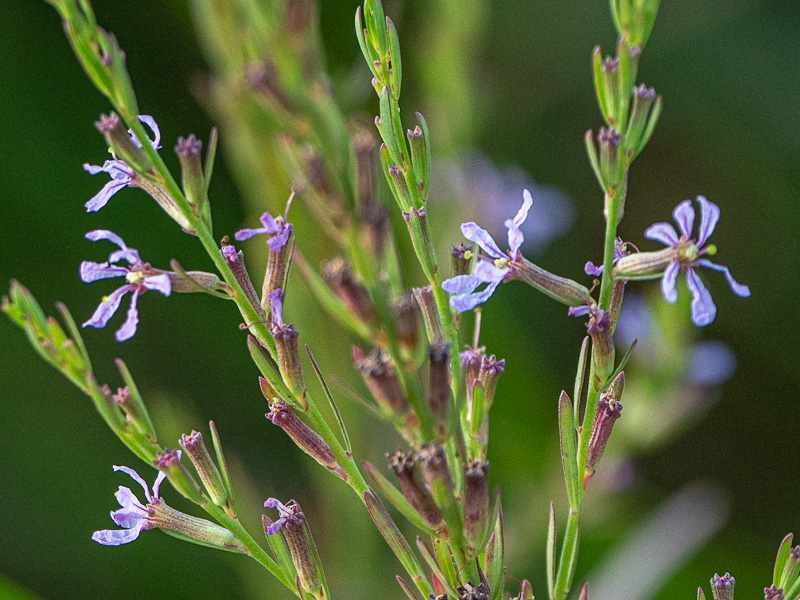
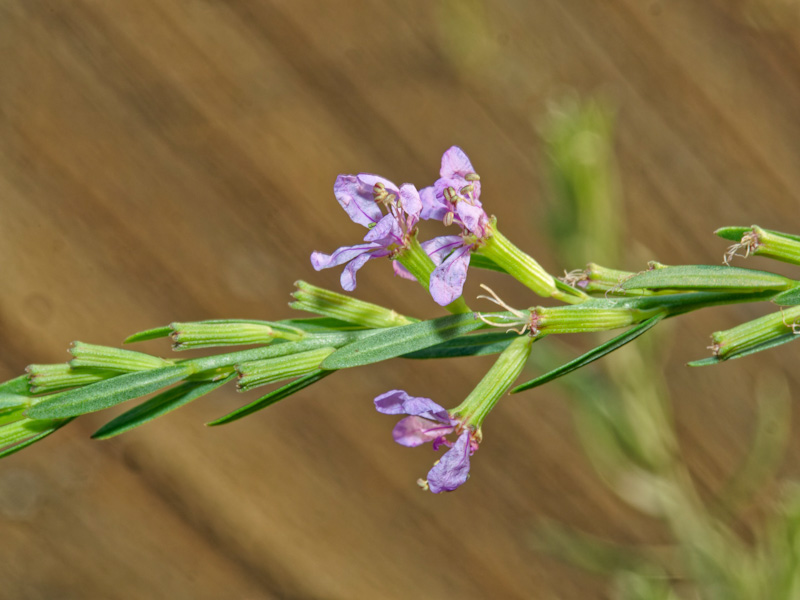
Lythrum californicum is a species of flowering plant in the loosestrife family known by the common name California loosestrife. It is native to northern Mexico and the southwestern United States into the Midwest as far east as Oklahoma and Texas. It often grows in moist habitat. This is an erect perennial herb reaching 20 to 60 cm (7.9 to 23.6 in) tall, sometimes branching. The waxy linear to lance-shaped leaves are arranged oppositely lower on the plant, and alternately toward the top. They are 1 to 7 cm (0.39 to 2.76 in) in length. The inflorescence is a terminal spike of flowers with purple petals under a centimeter long. Flowers are heterostylous on one individual plant, with some having long, protruding styles and some with shorter styles not protruding from the mouth of the flower. The fruit is an oval capsule containing many minute seeds.
Leafy Fleabane
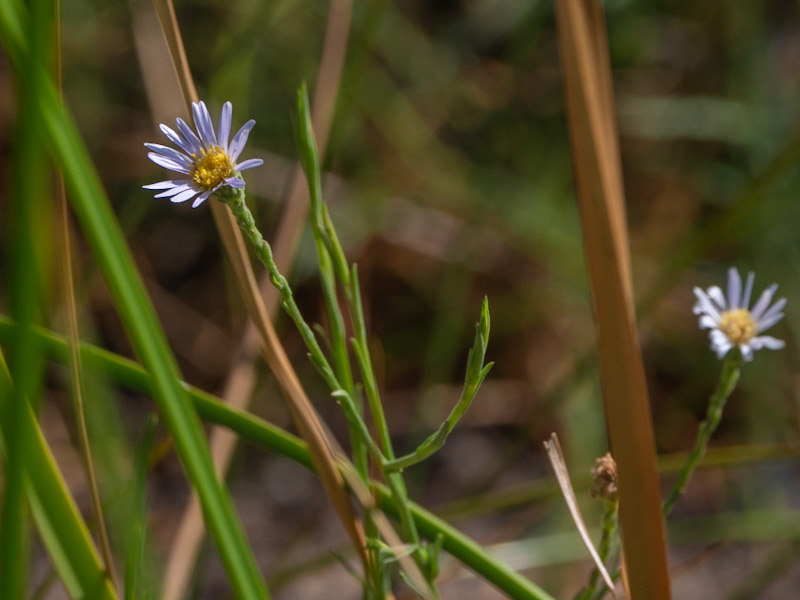
In general, Erigeron foliosus is an erect, clumping and branching perennial daisy growing from woody roots to heights of anywhere between 8 inches (20 cm) and 3 feet (1 m). Unlike some other fleabanes, it has leaves evenly spaced all over the stem. They may be thready or wide and flat, and are between 1–7 centimetres (0.39–2.76 in) long. Atop each branch of the leafy stem is an inflorescence of one to several flower heads, each one to 1.5 centimetres (0.59 in) wide. The head has a center of golden yellow disc florets surrounded by a fringe of up to 60 pale to medium purple ray florets.
Desert Globemallow
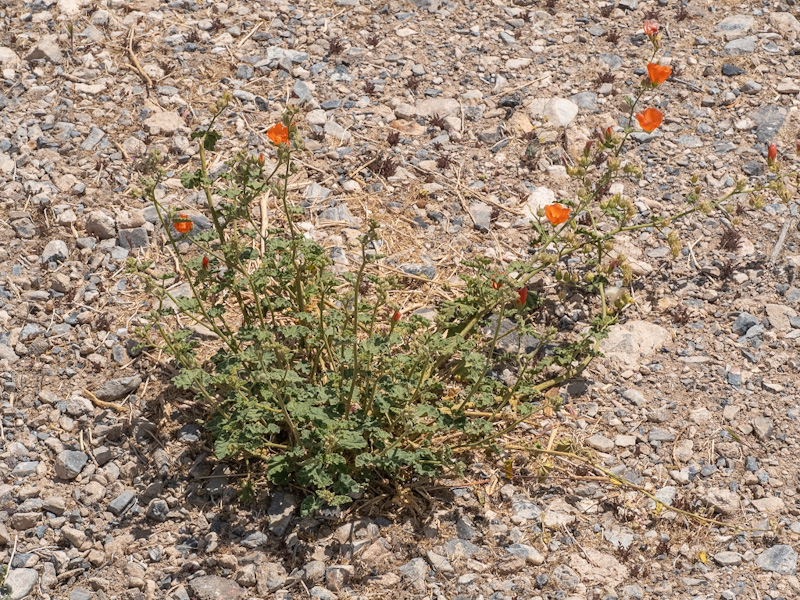
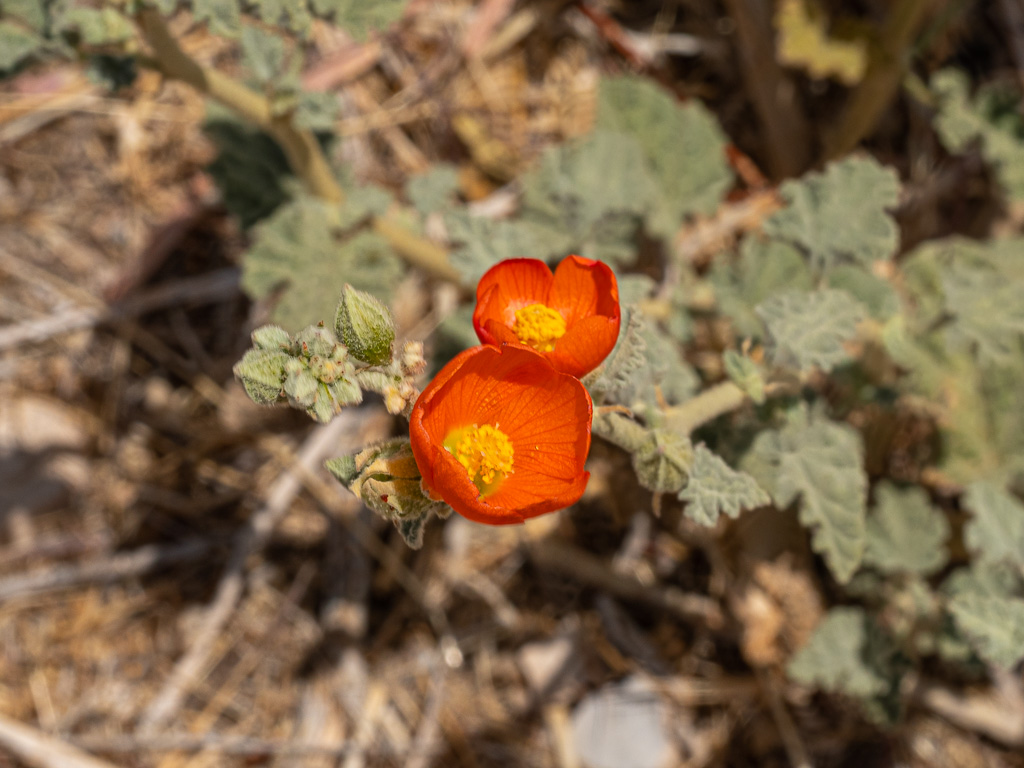
It grows to 3 feet in height, and spreads to 2–4 feet in width. The leaves are fuzzy with white hairs on both sides, lobed, veined, and on long stems, the number of which increase with age. The fruit is a brown capsule containing numerous seeds, first quite spherical as implied by the genus name, later flattening to a disk. The flowers are bowl-shaped, 5-petaled, apricot to dark orange red in color, and bloom in the spring. Three varieties; Sphaeralcea ambigua var. ambigua, Sphaeralcea ambigua var. rosacea (flower more lavender) and Sphaeralcea ambigua var. rugosa.
Wyoming Indian Paintbrush
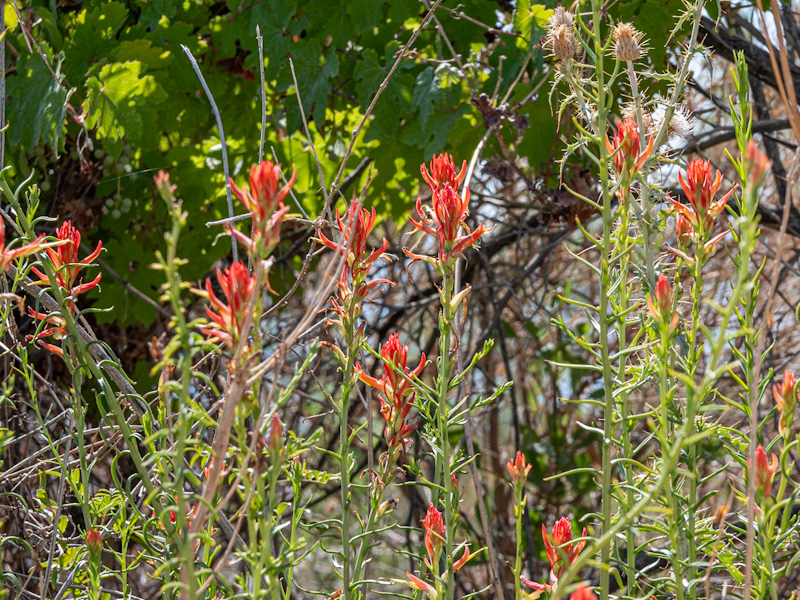
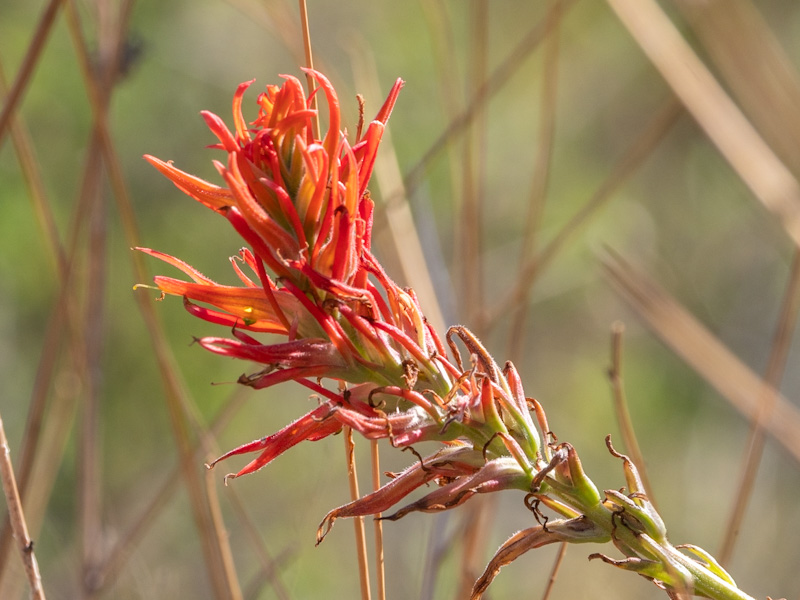
Castilleja linariifolia is a perennial herb. It grows up to 3 feet (1 m) in height and has sparse, linear leaves which are between 1–3 inches (20–80 mm) in length and have up to 3 lobes. The flowers, which consist of a pinkish-red to yellow calyx and yellow-green floral tube, appear in panicles or spikes between June and September in its native range.
Frémont’s Dalea or Frémont’s Indigo Bush
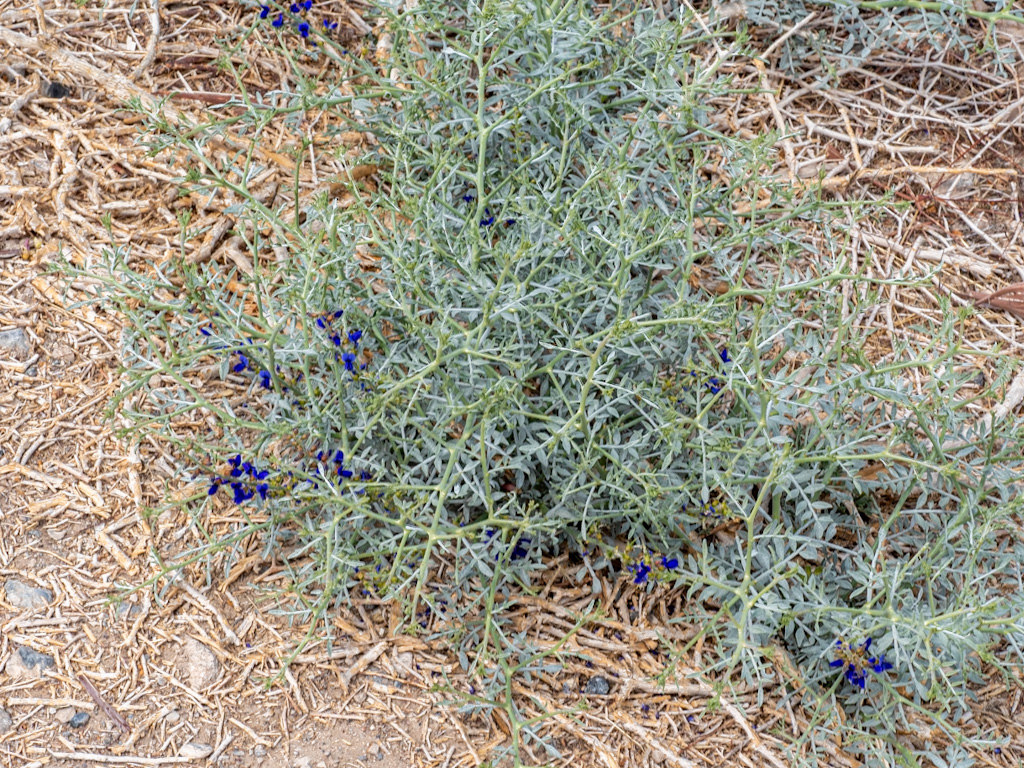
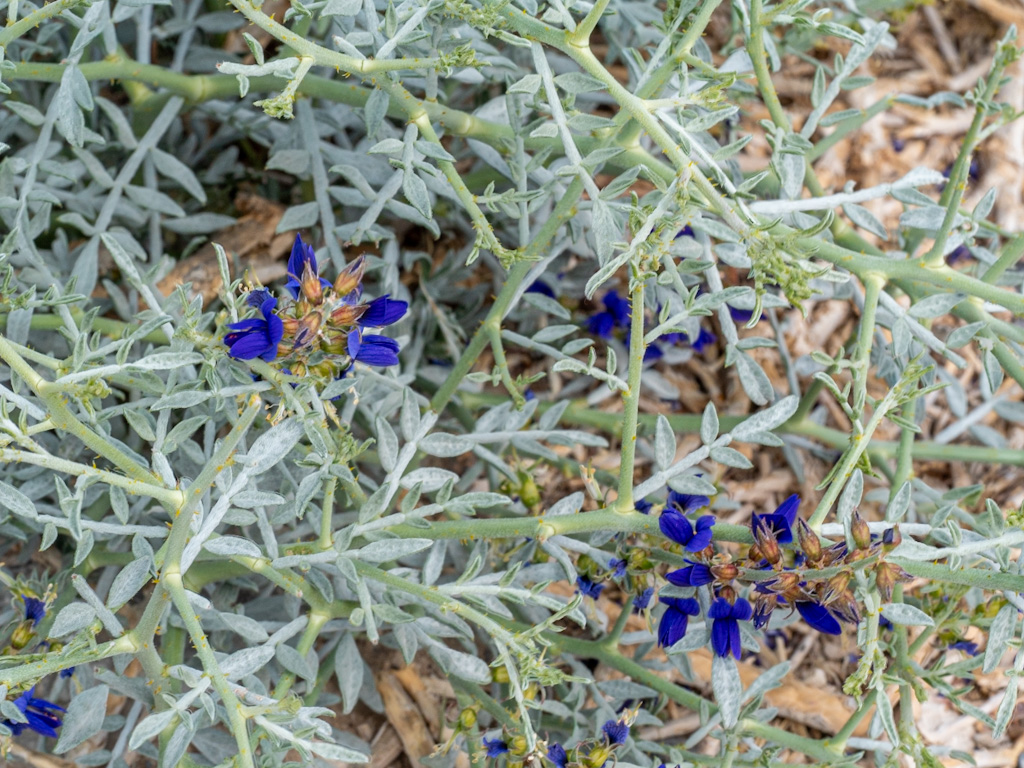
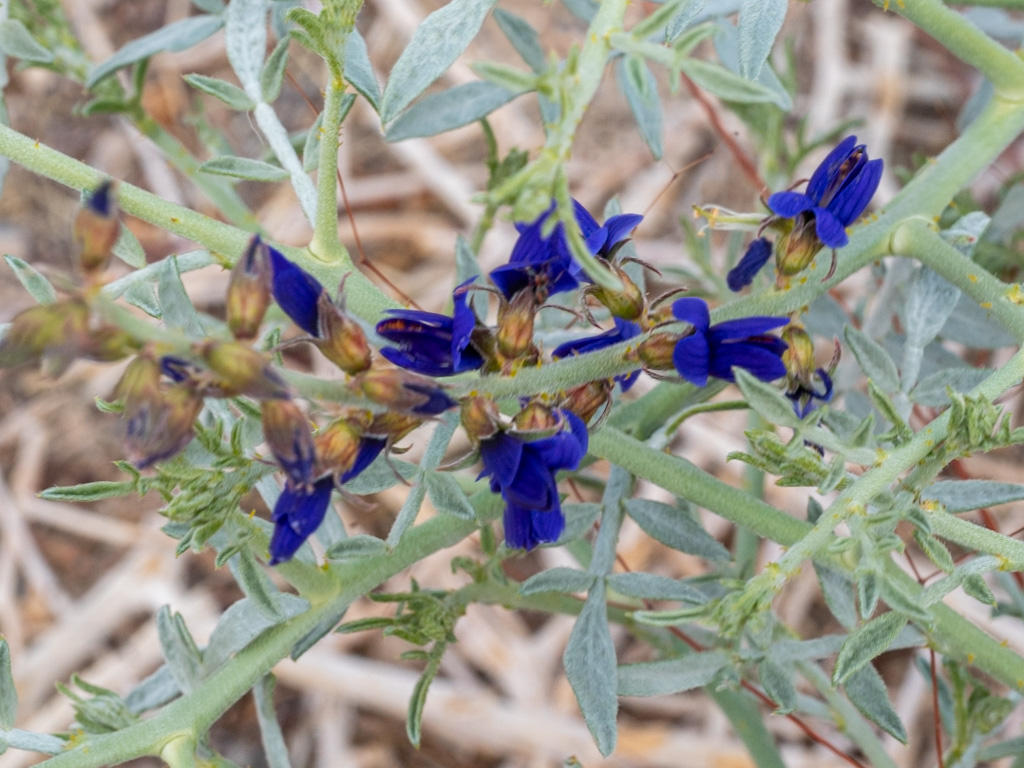
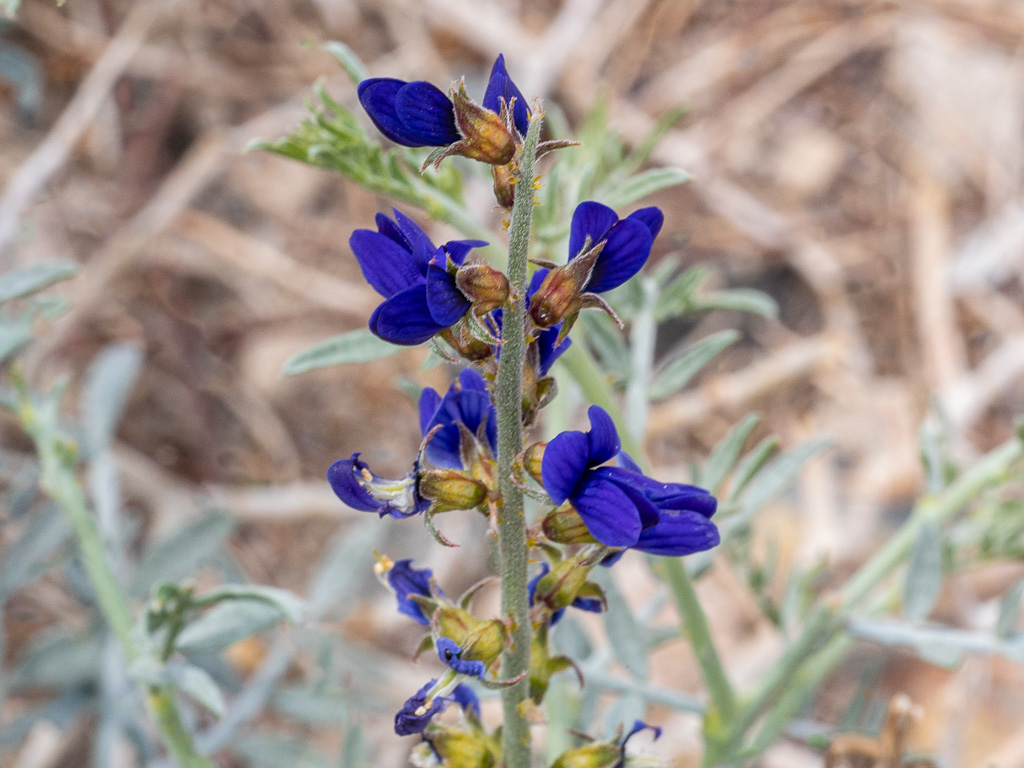
For most of the year psorothamnus fremontii is a nondescript shrub, with twisted, grey, woody stems and a sparse covering of leaves, resembling many other bushy species in the hot, dry deserts of the Southwest. But in spring it produces numerous small flowers that have a particularly deep, rich shade of purple-blue, and persist for several weeks. Once you see them, you will never forget them. Psorothamnus fremontii is common to the Southwestern United States and northwest Mexico – in the states of California, Nevada, Utah, and Arizona, Sonora, and Baja California.
References:
Ash Meadows National Wildlife Refugee
Ash Meadows National Wildlife Refuge Plant List
Plants of Ash Meadows: US Fish and Wildlife
Springs in the Mojave Desert Network— Vegetation Monitoring at Selected Large Springs
Nevada Rare Plant Treasure Hunt
Spring-loving Centaury. CalFlora
Checklist of the Vascular Plants of Nevada
Status of populations of the endemic plants of Ash meadows
Ash Meadows Rare Plantshttps://traveltoeat.com/ash-meadows-national-wildlife-re
